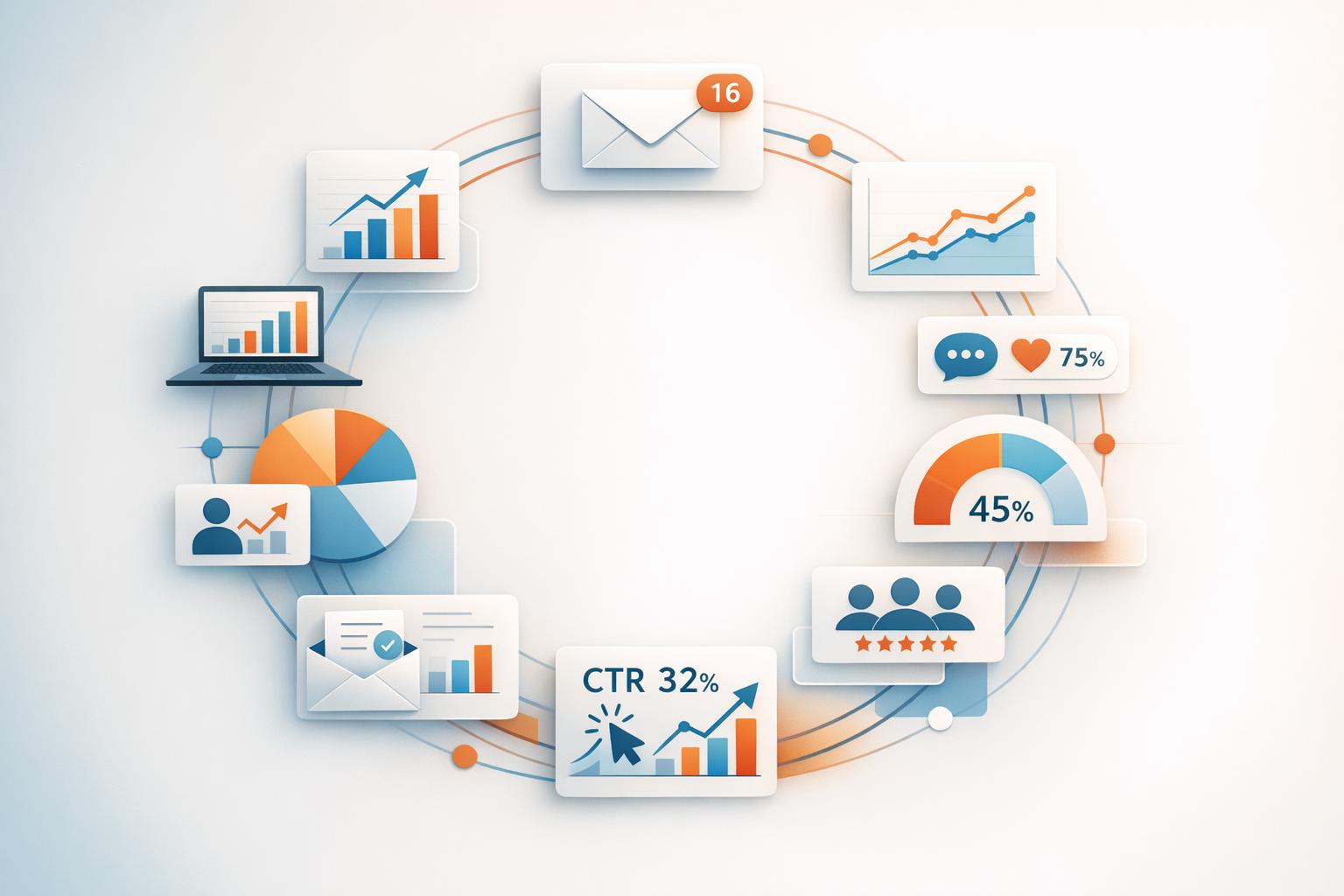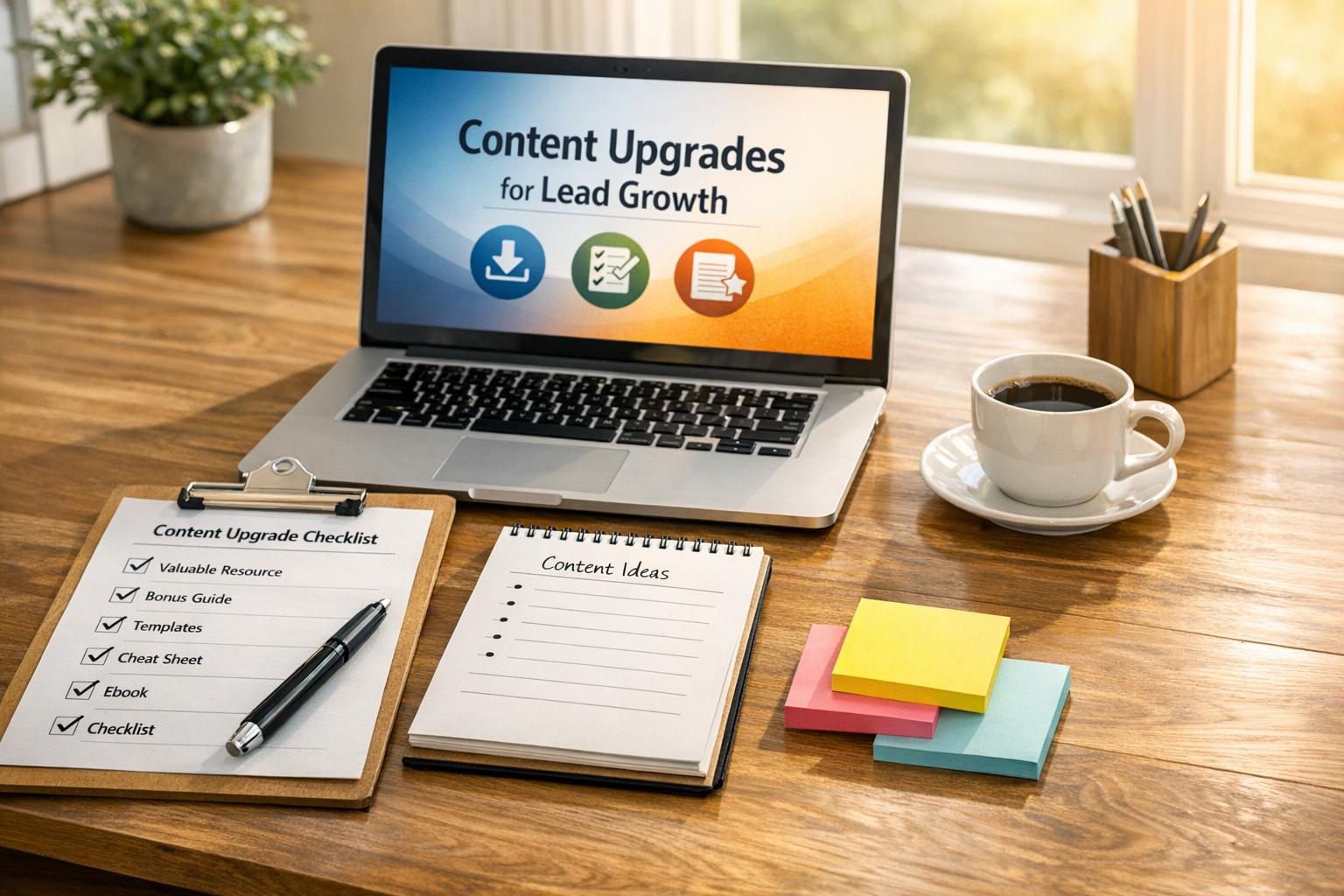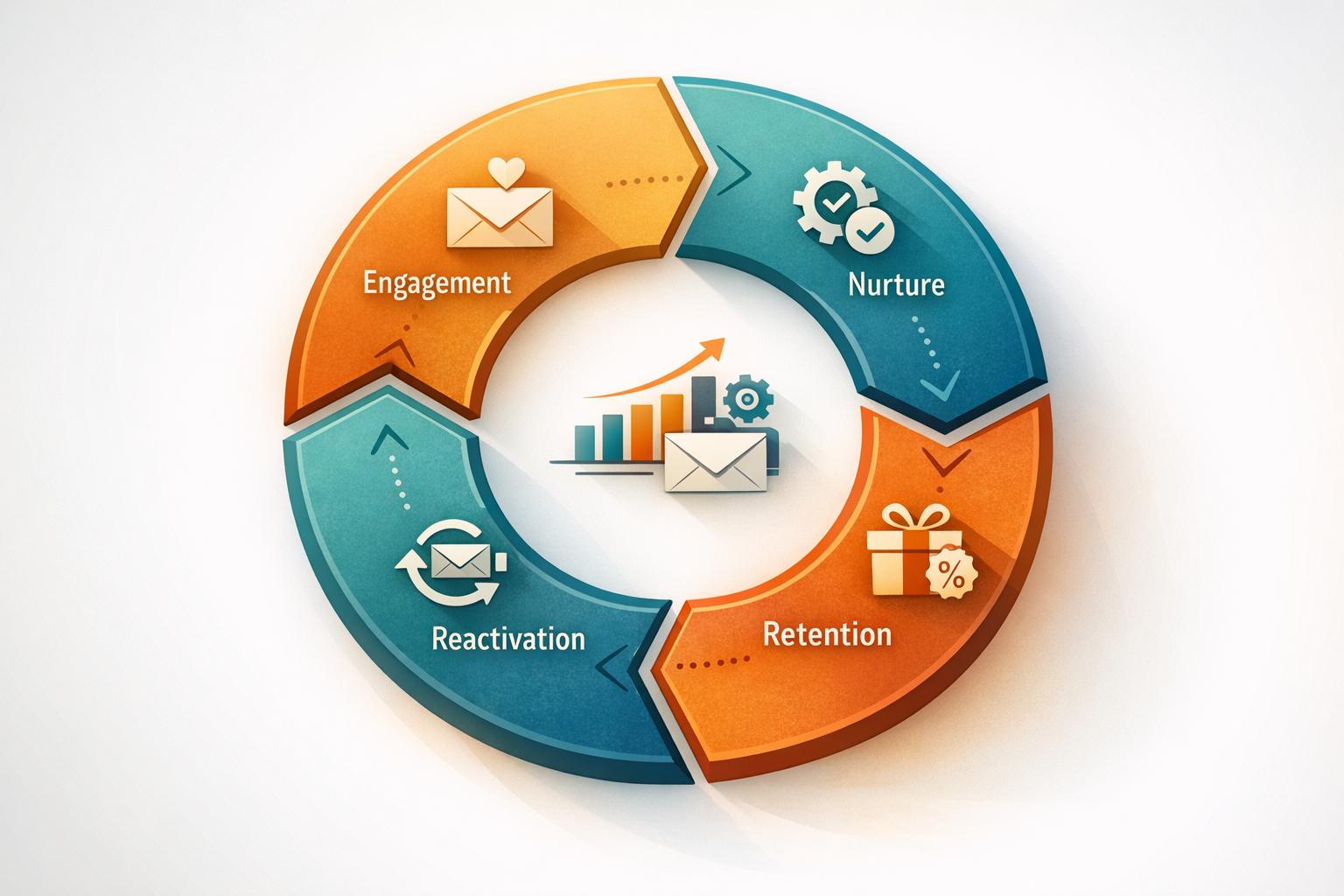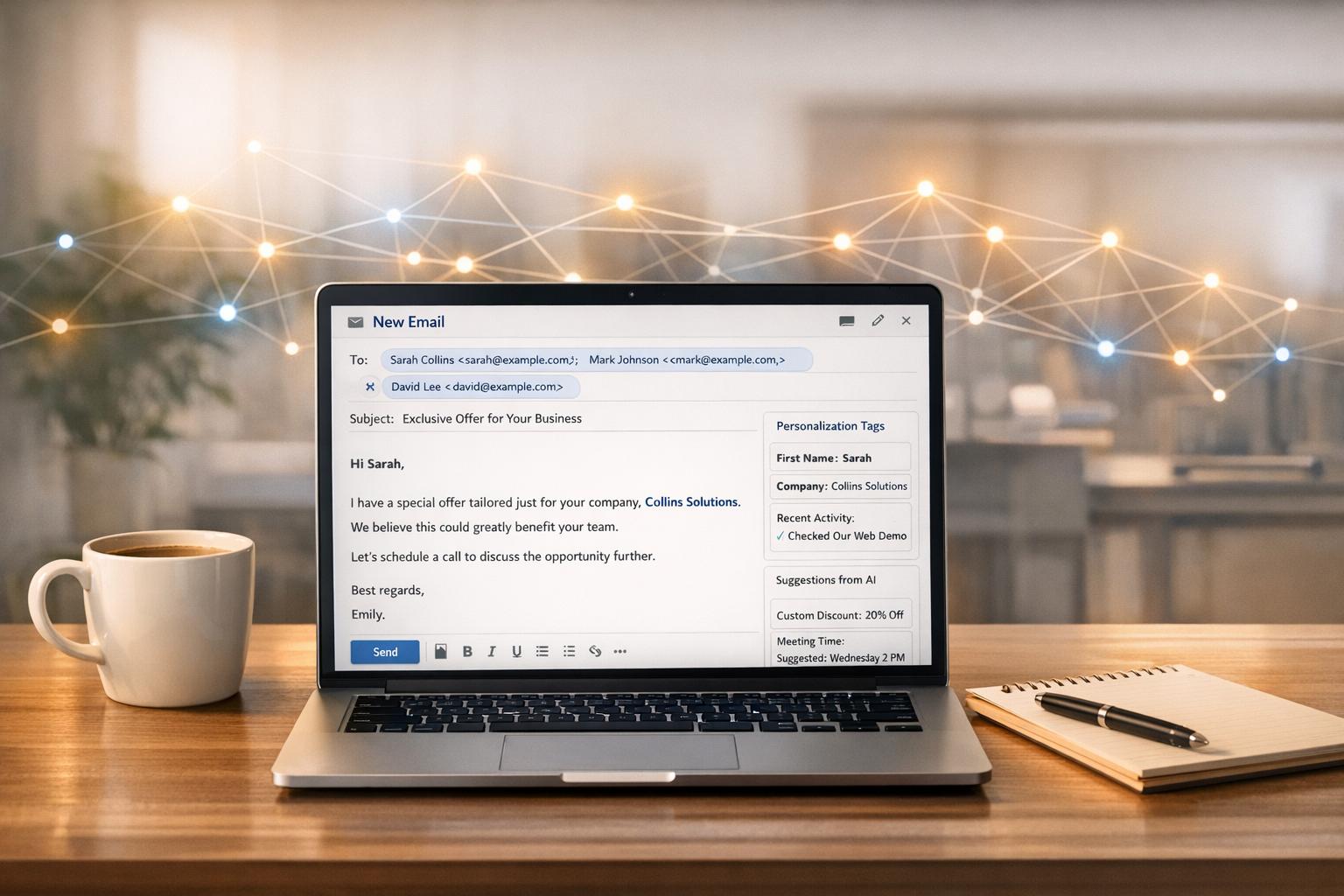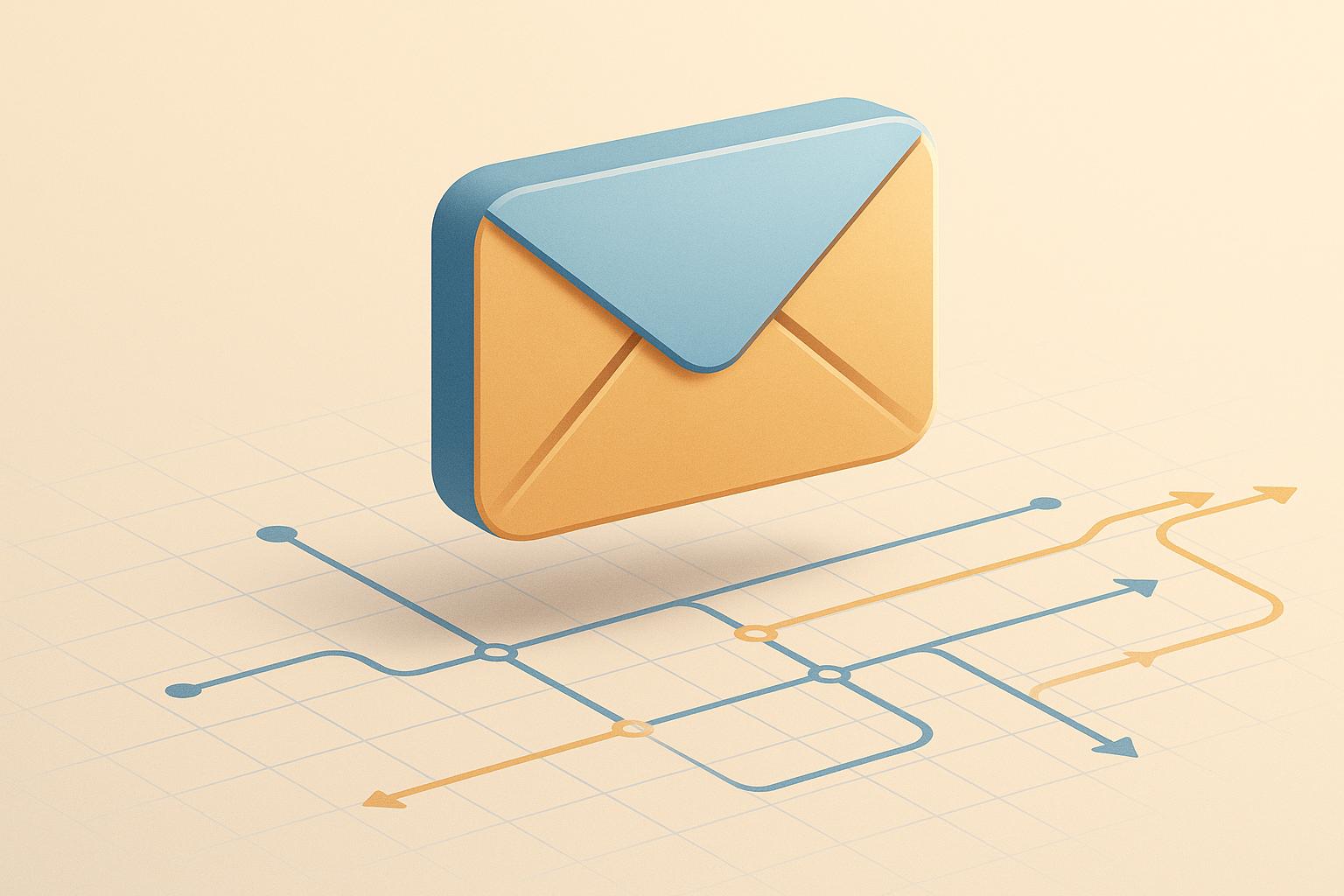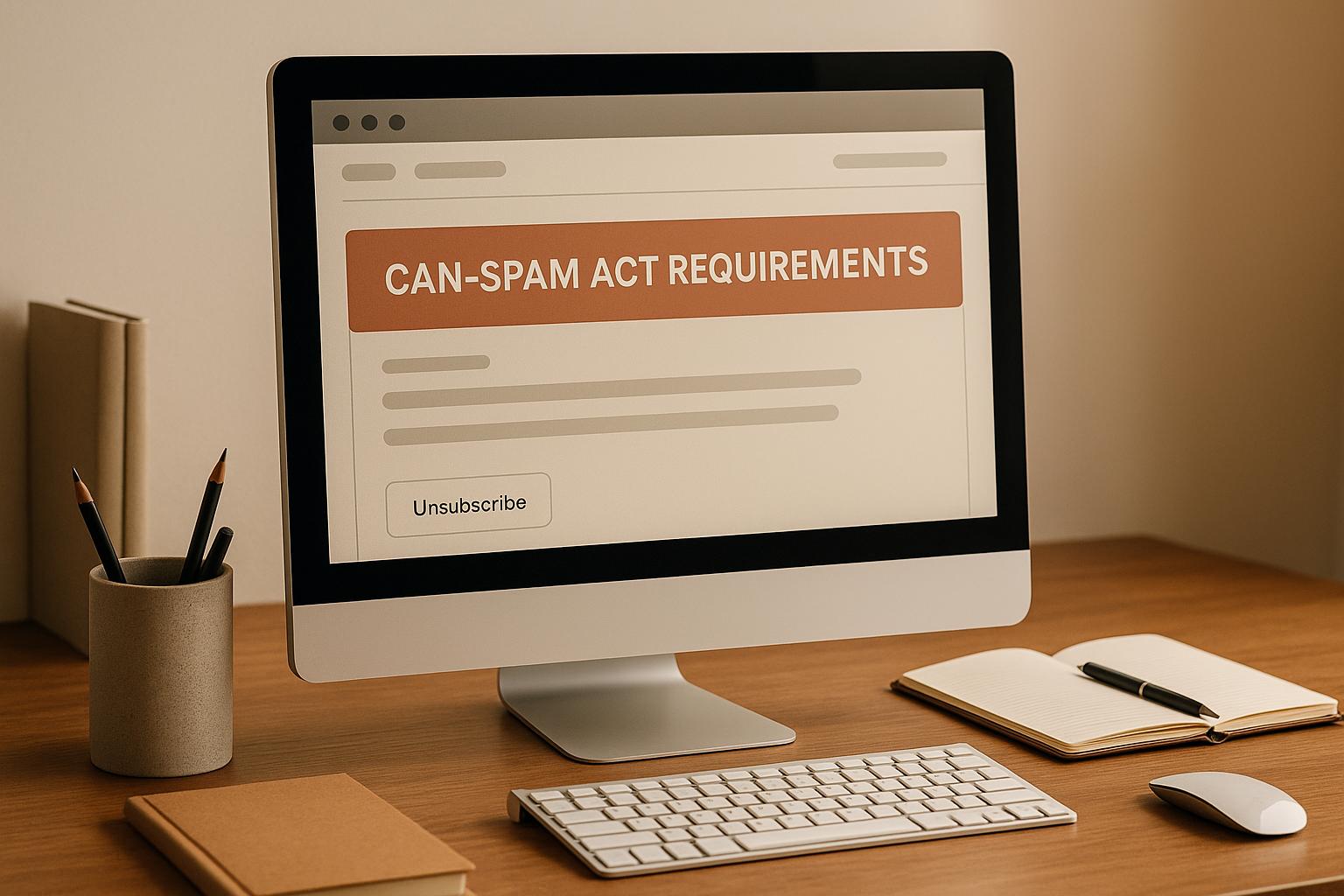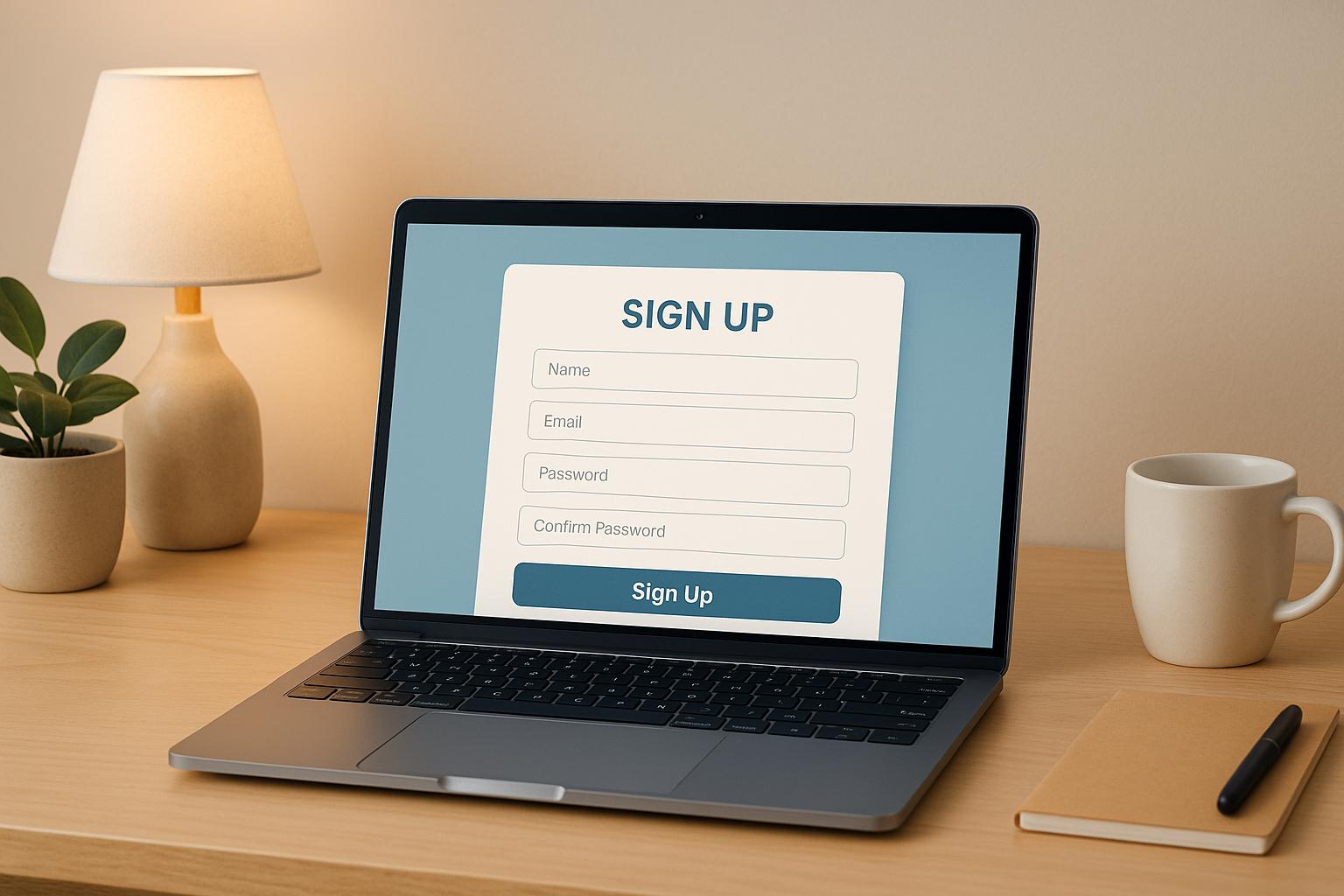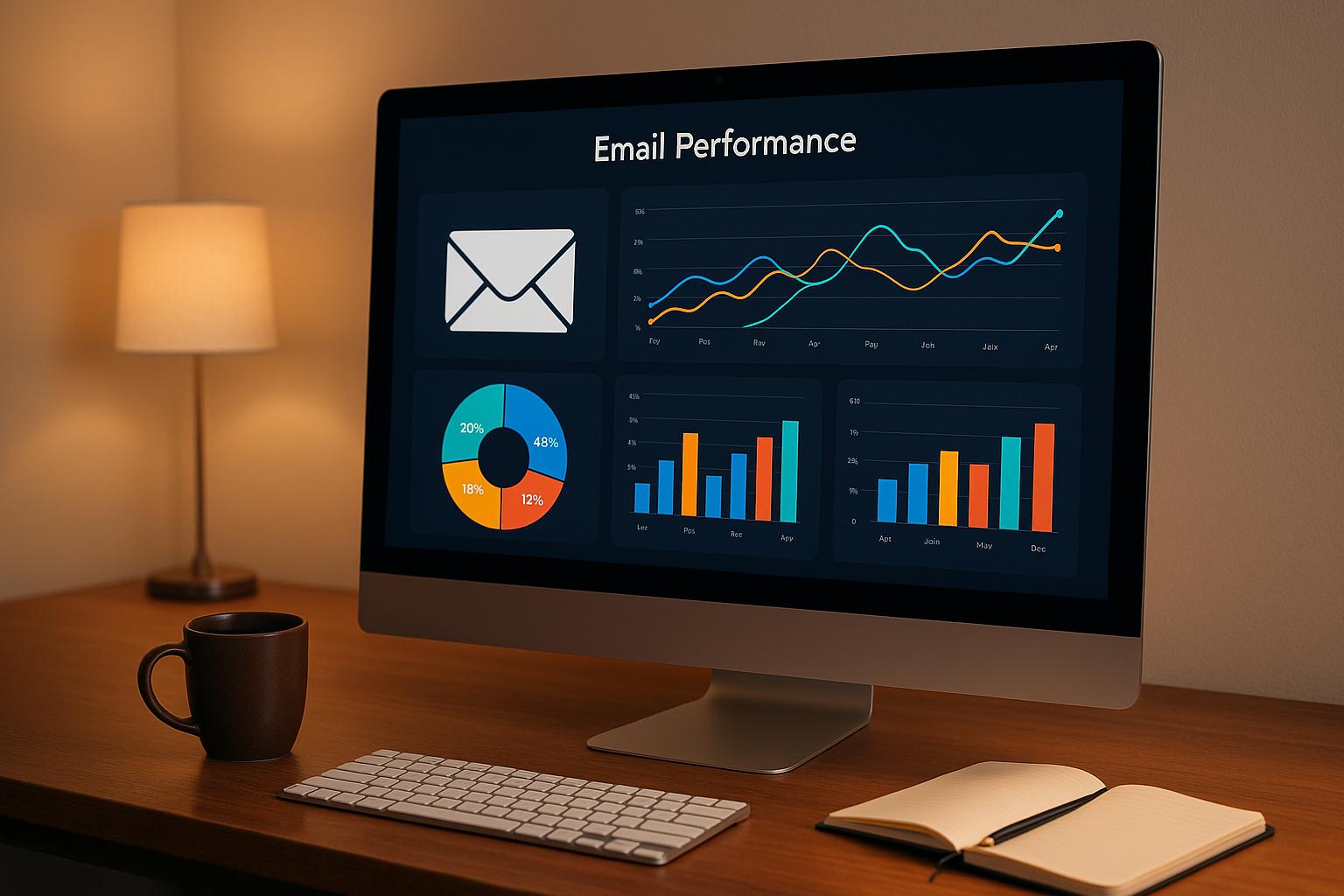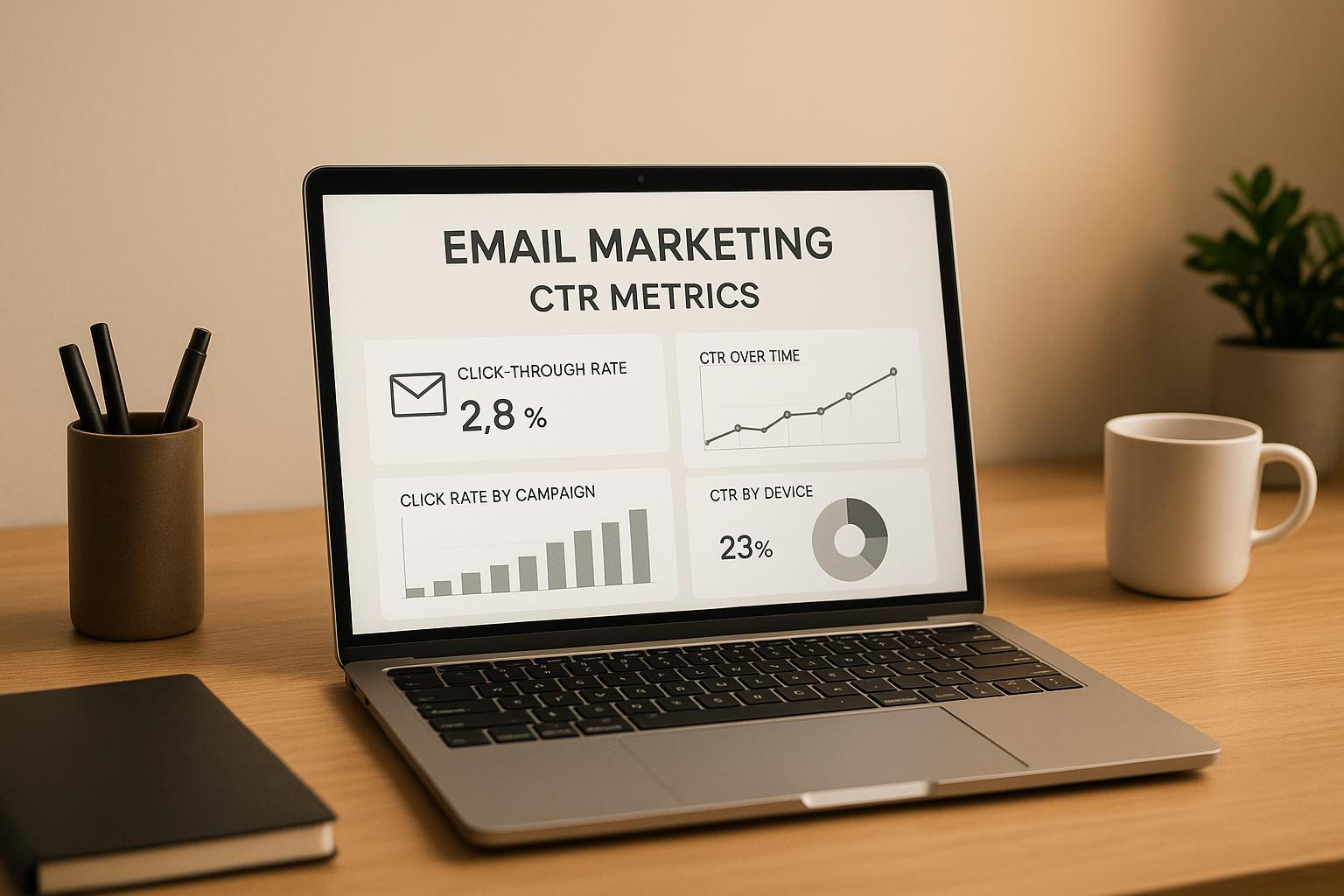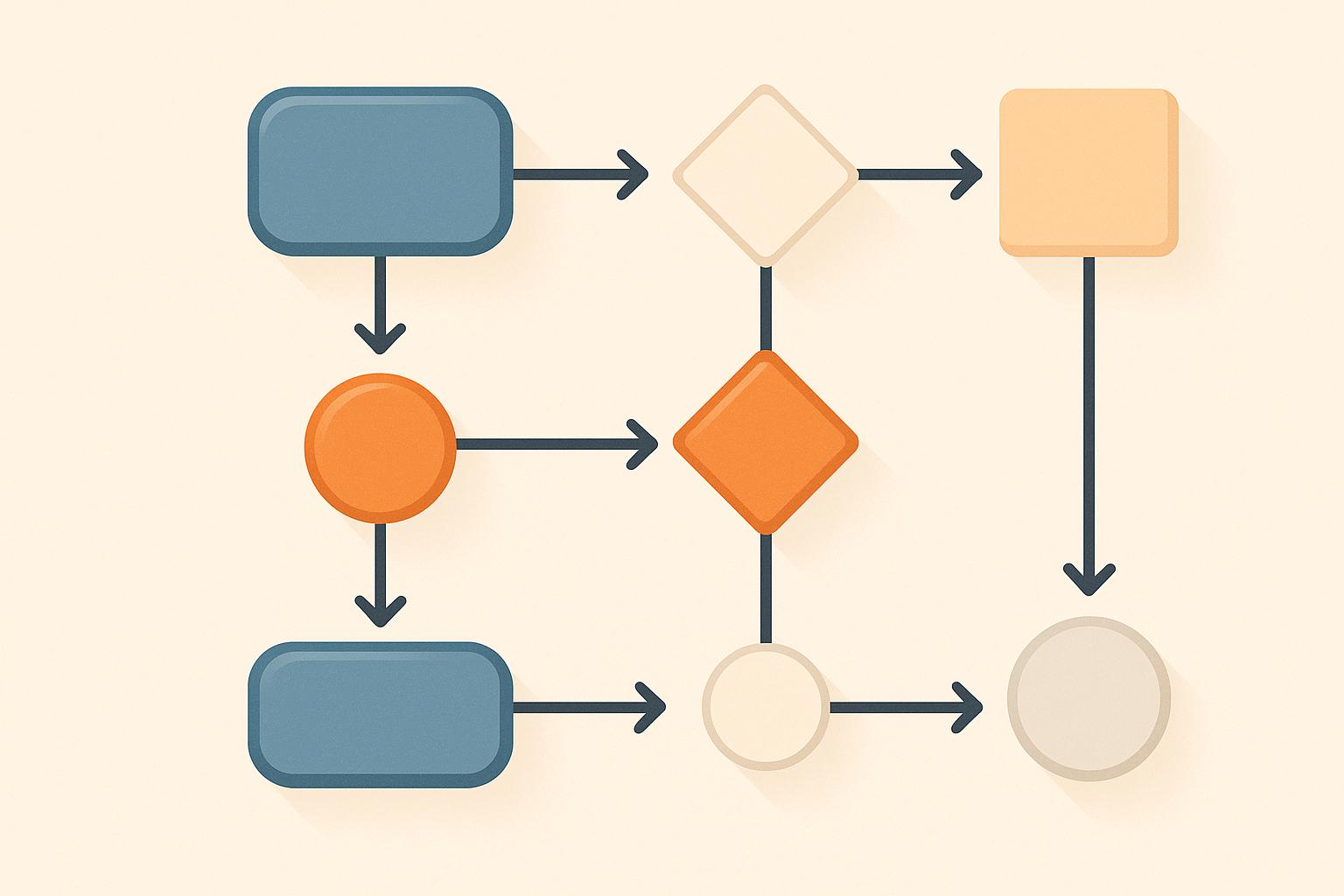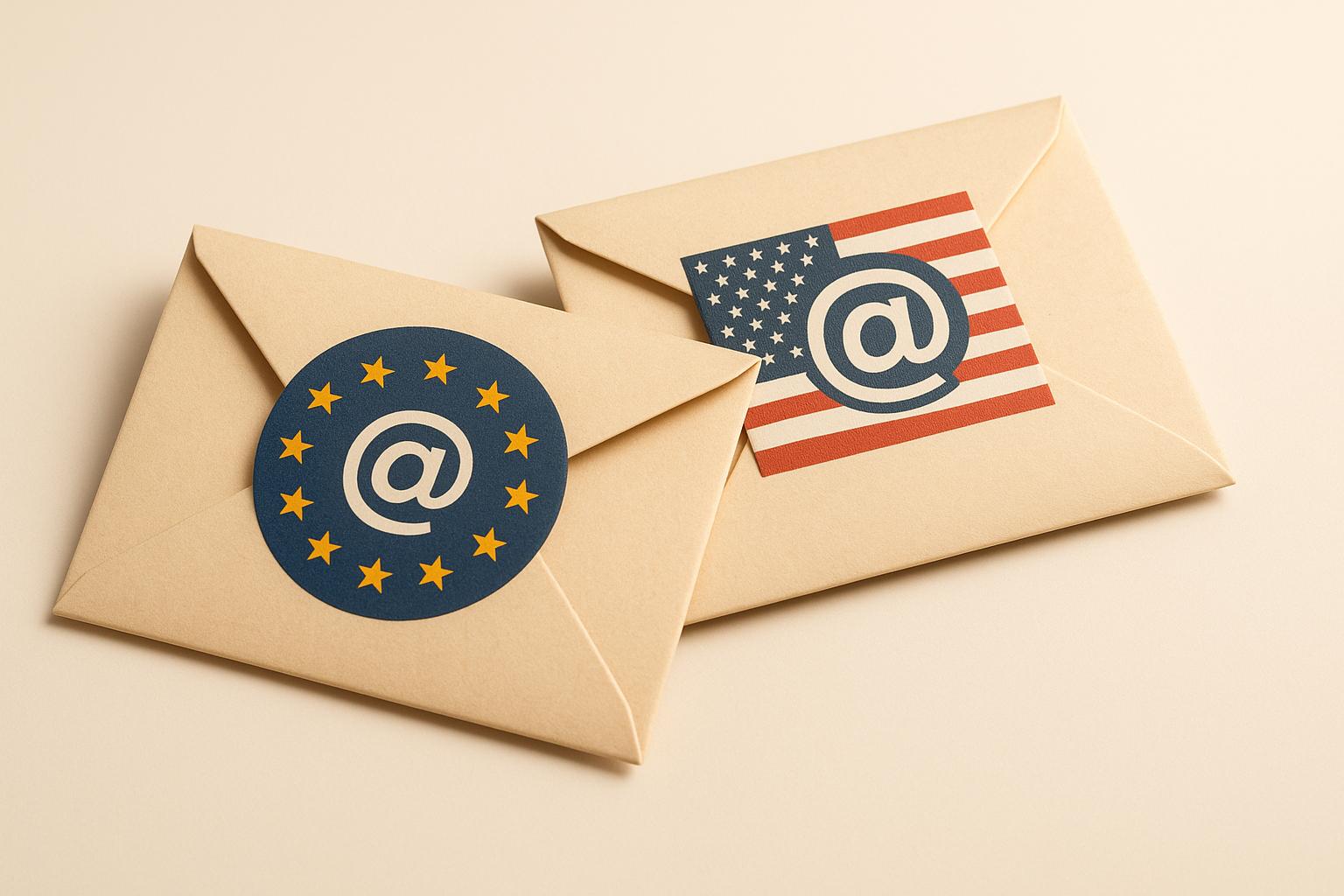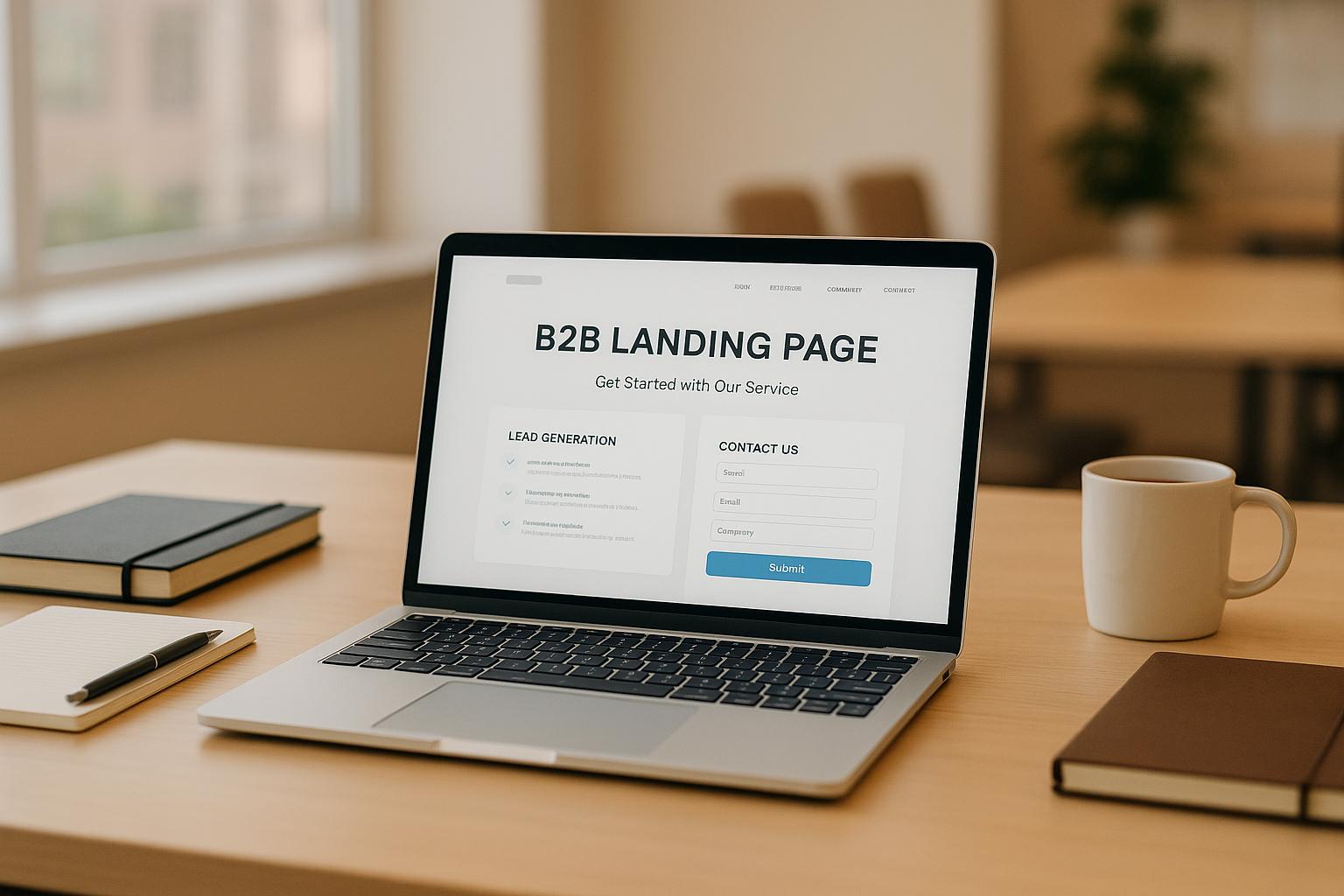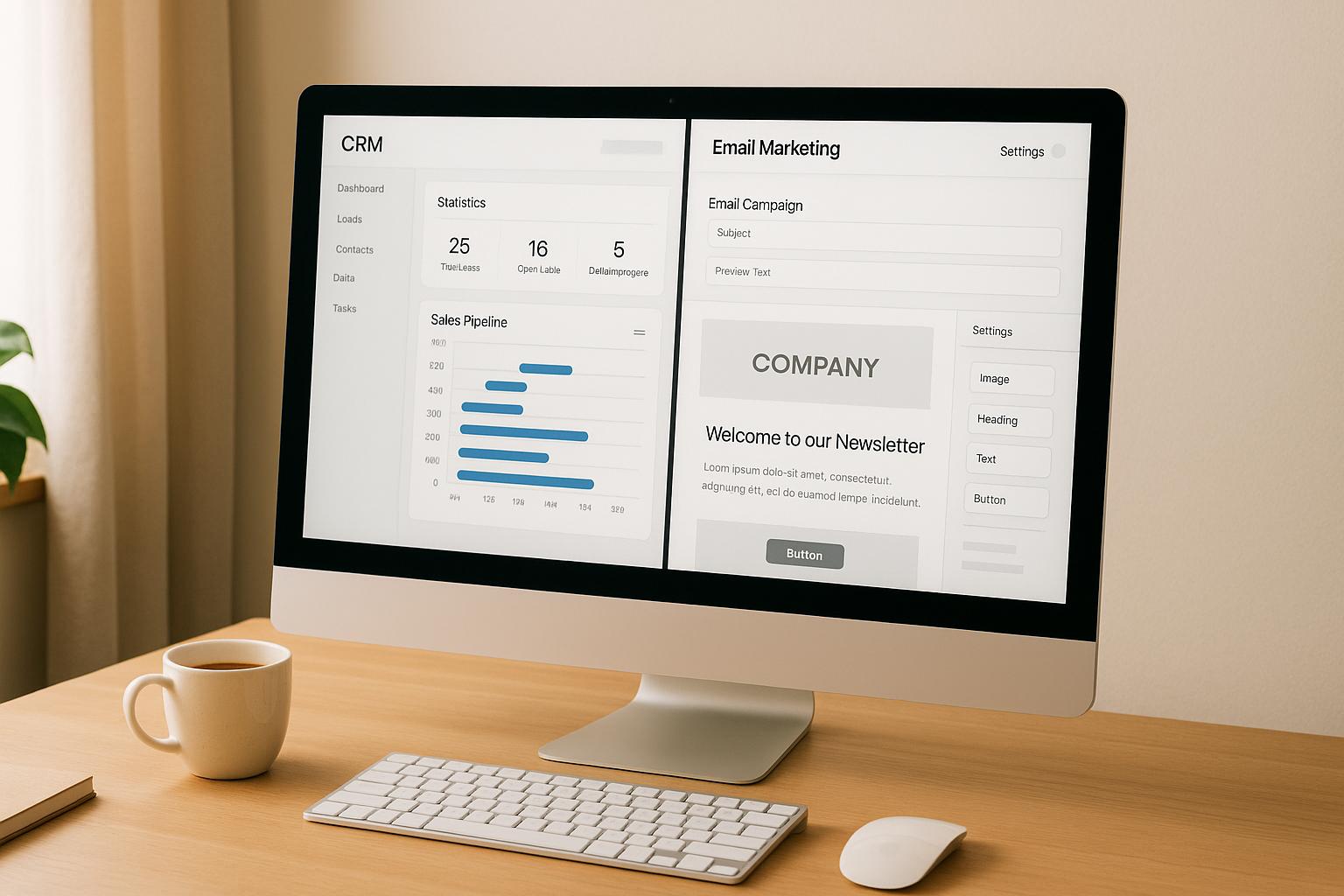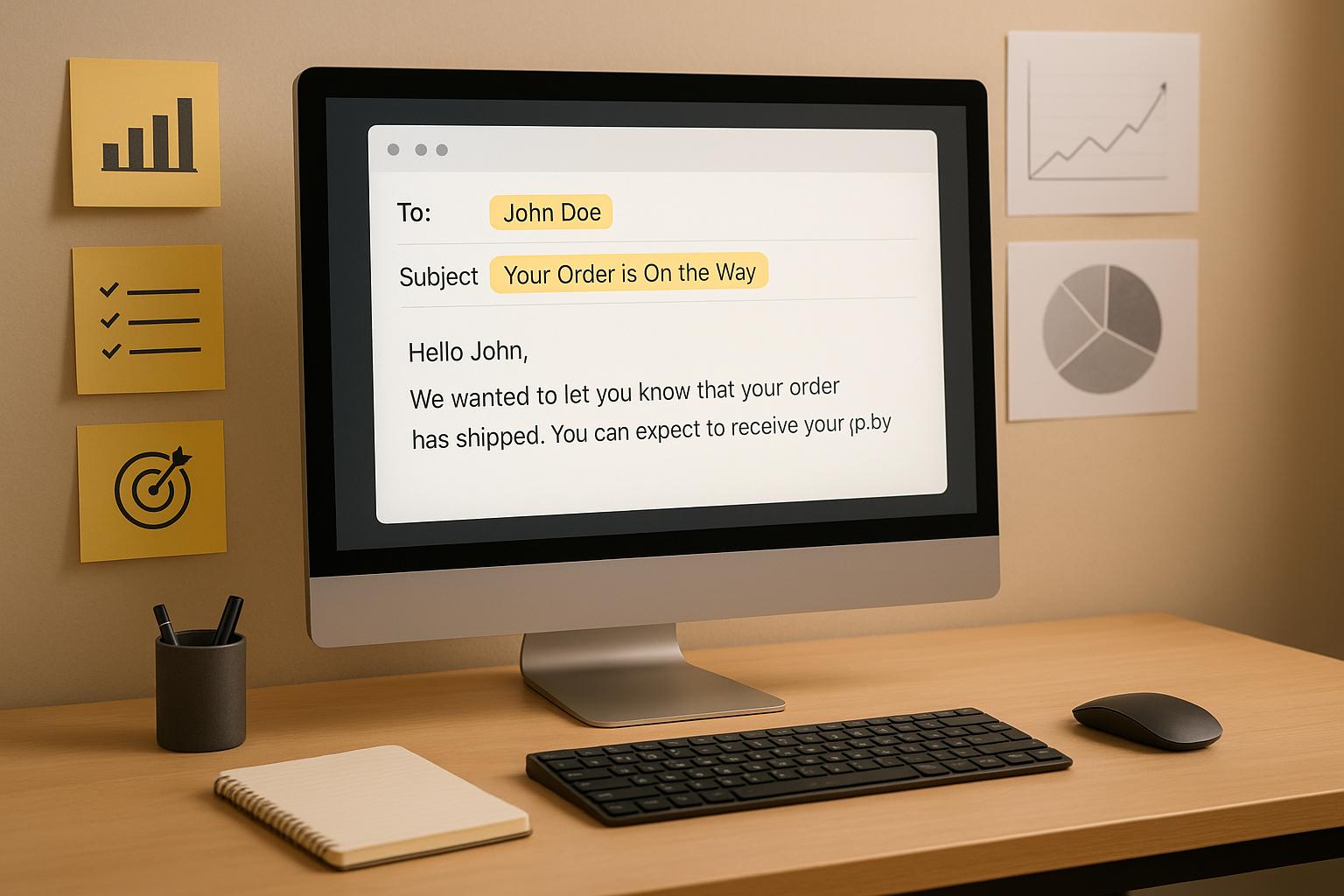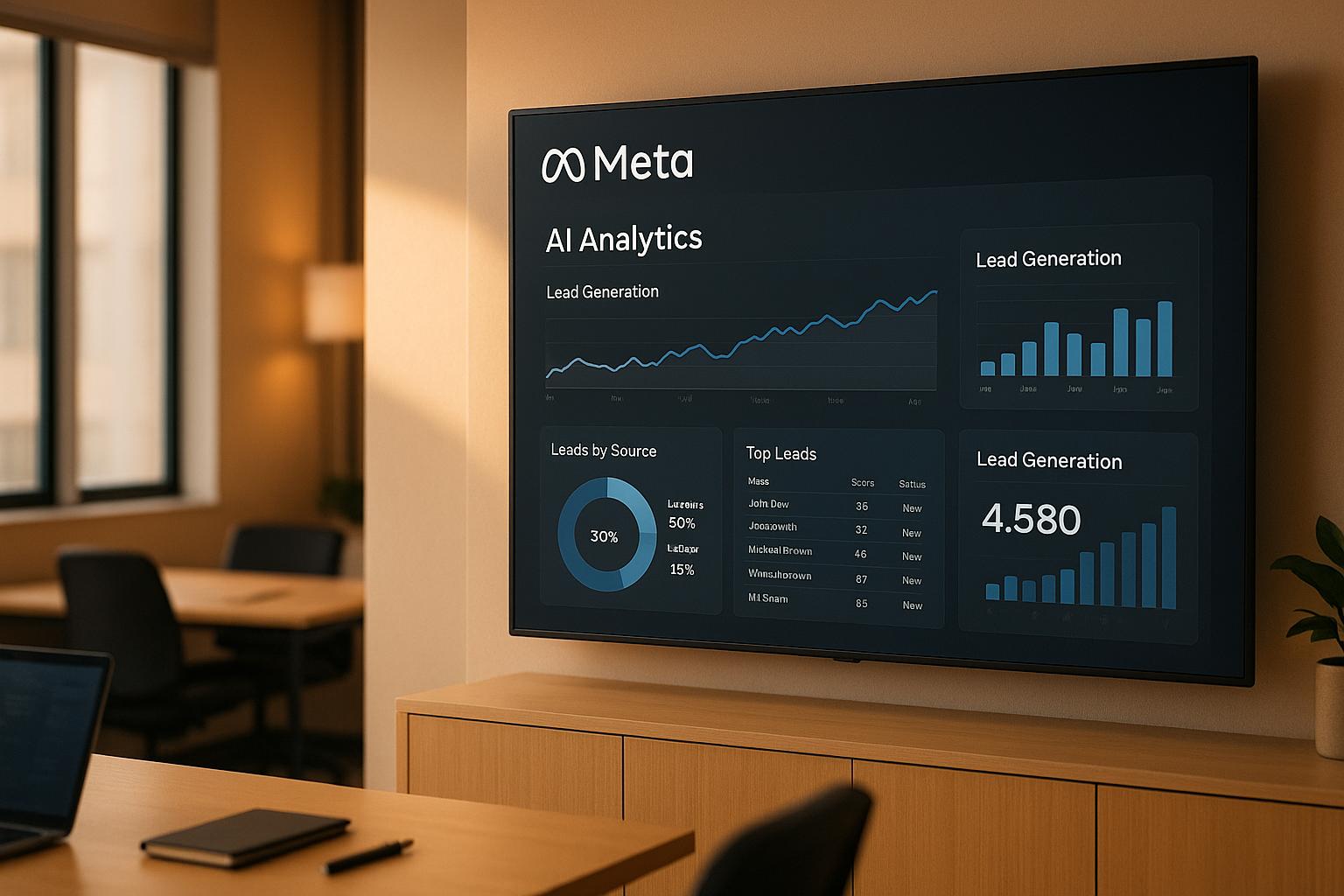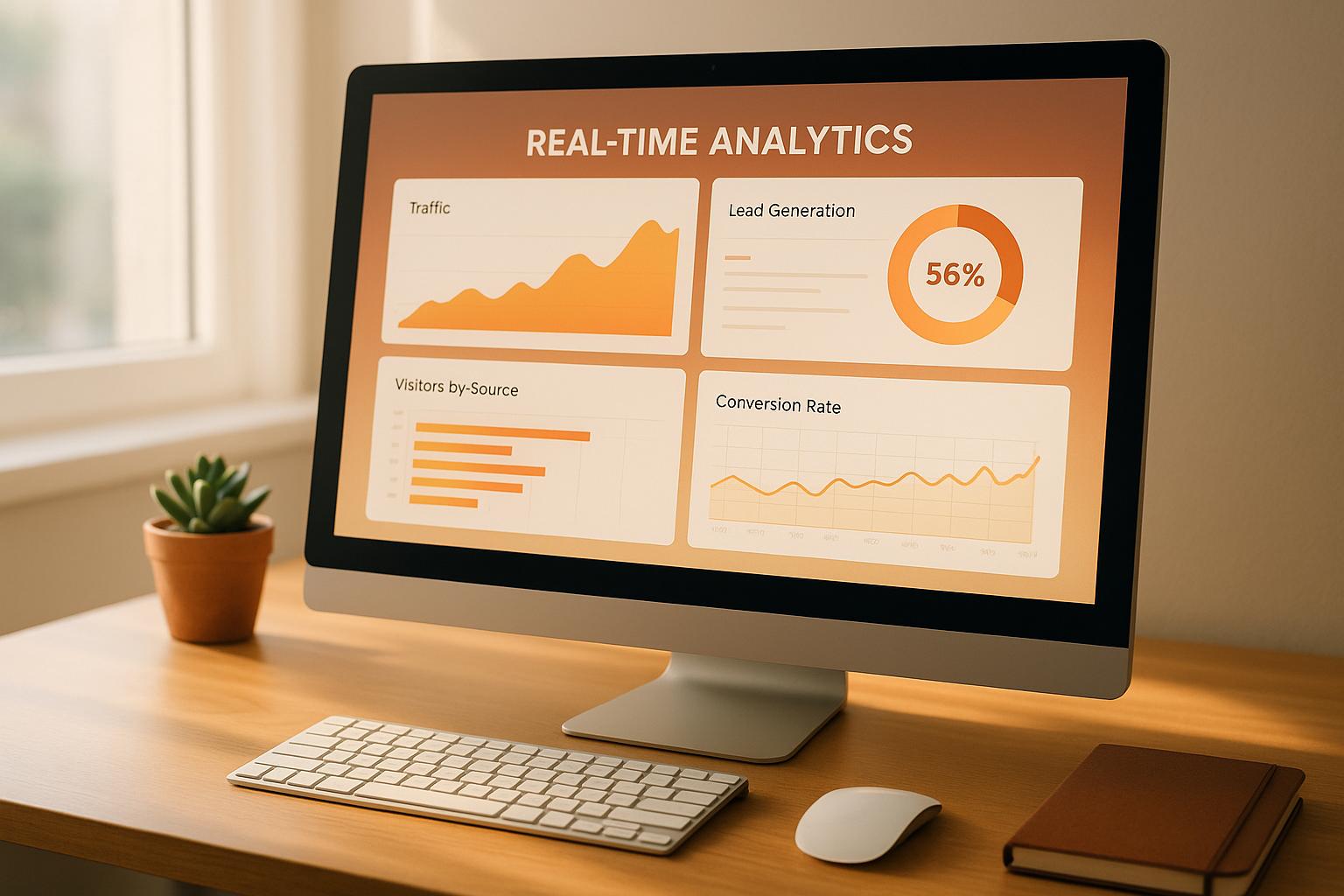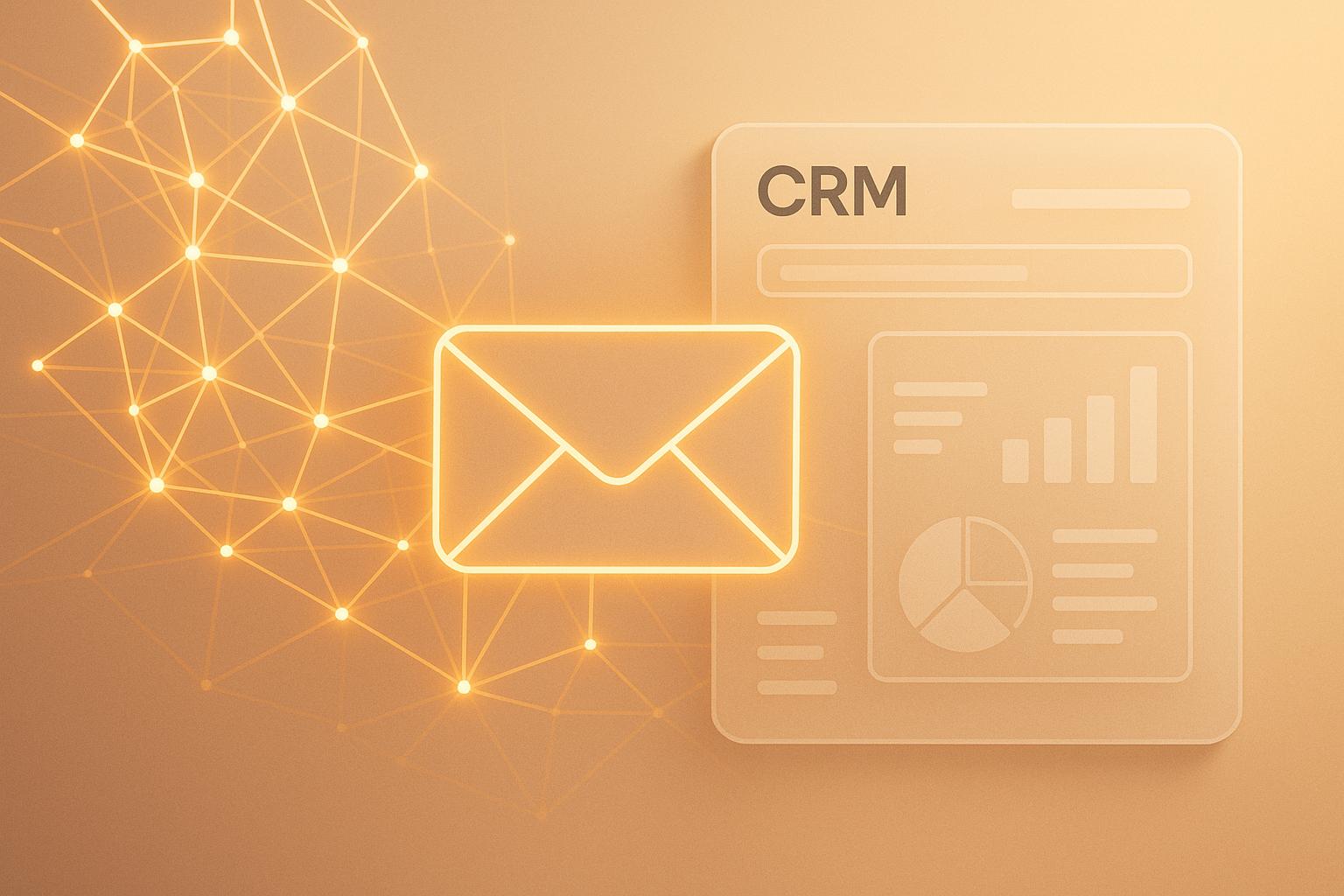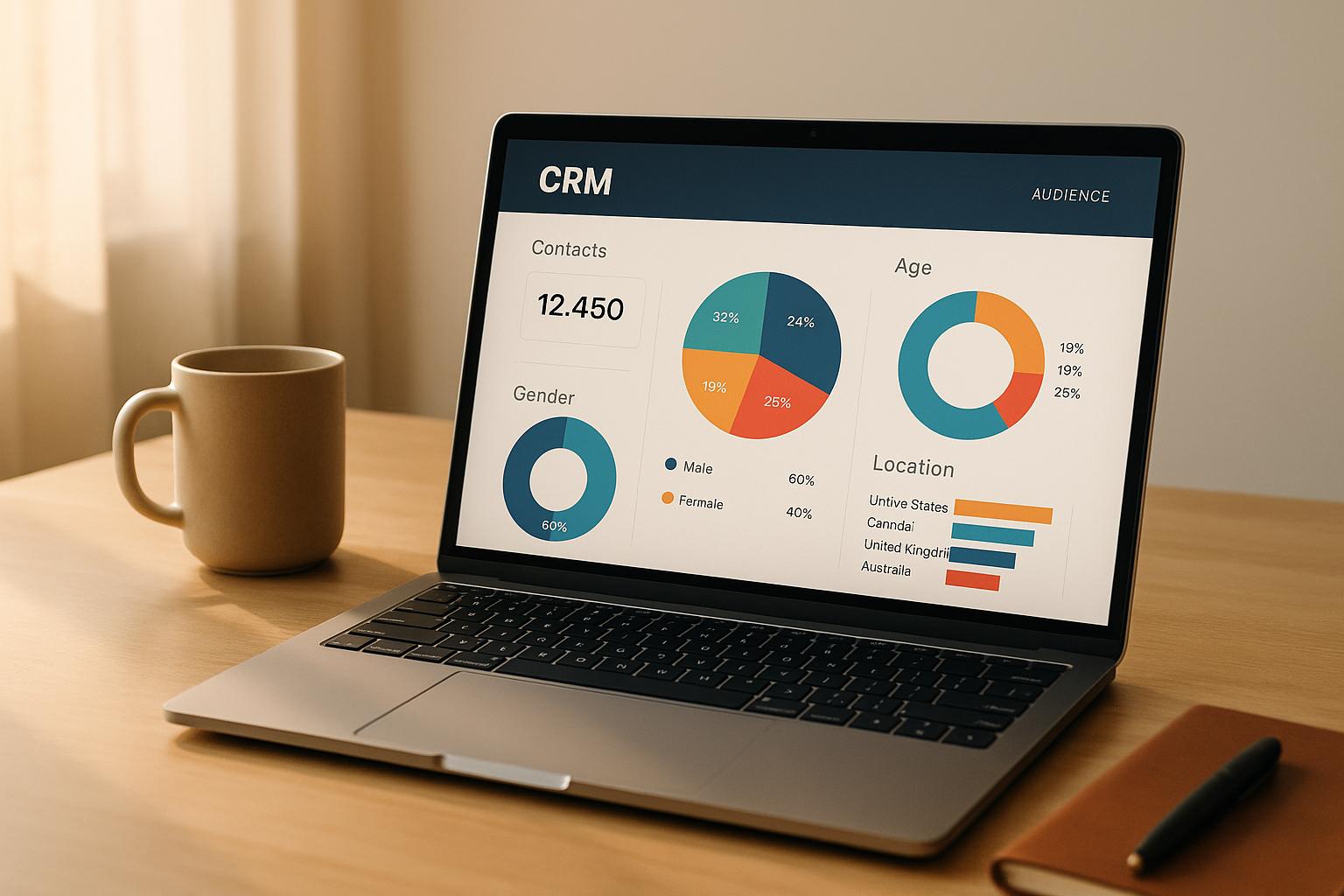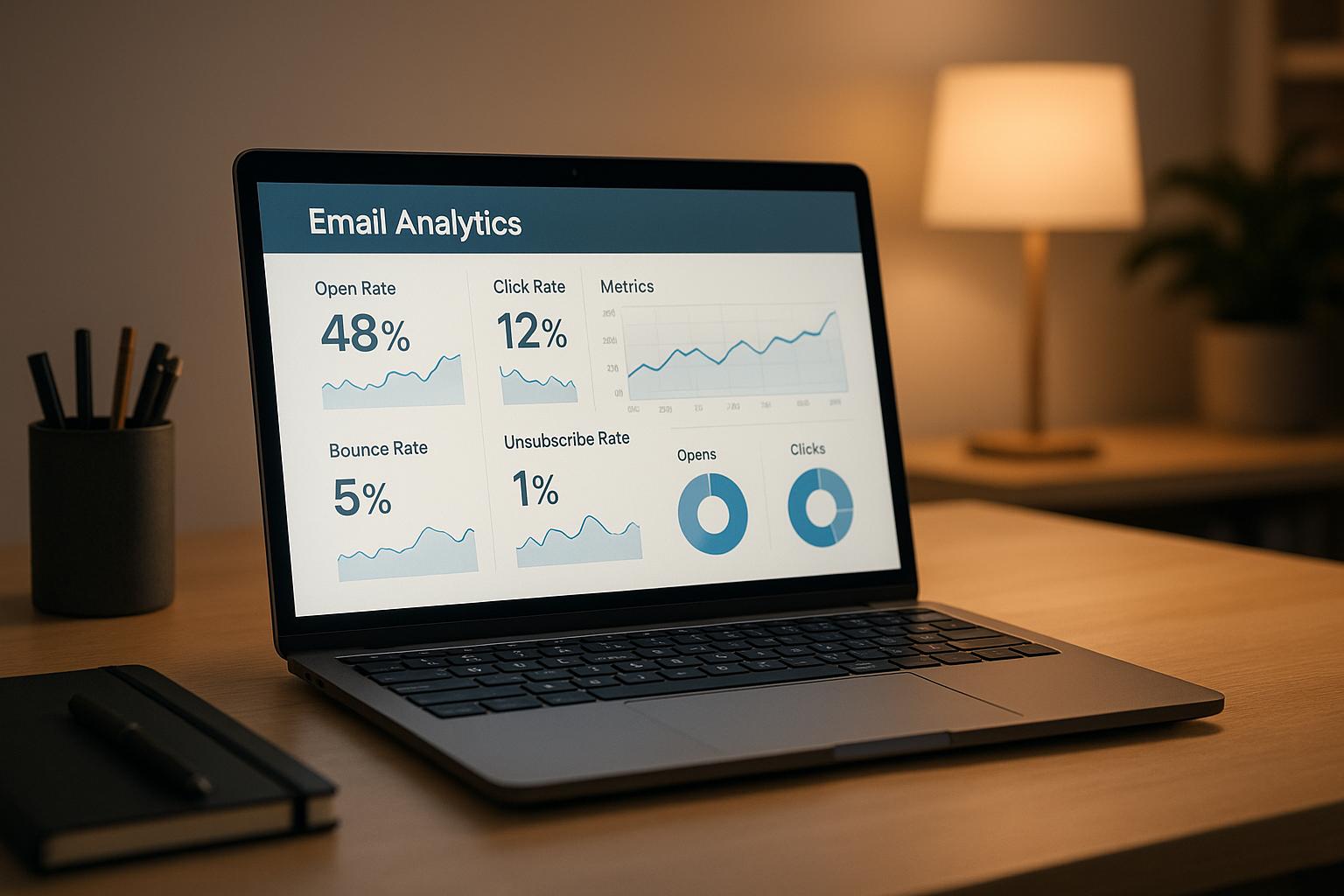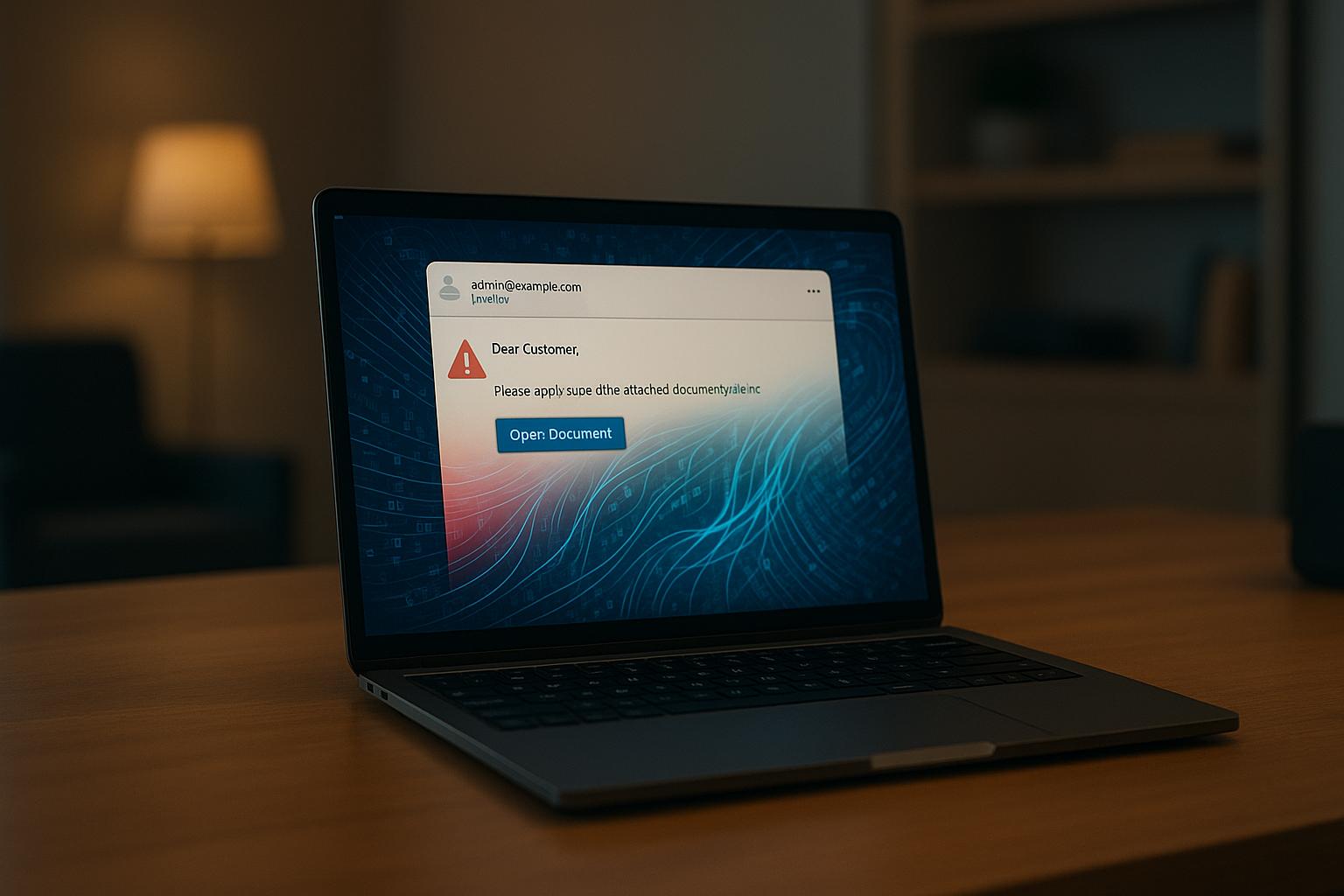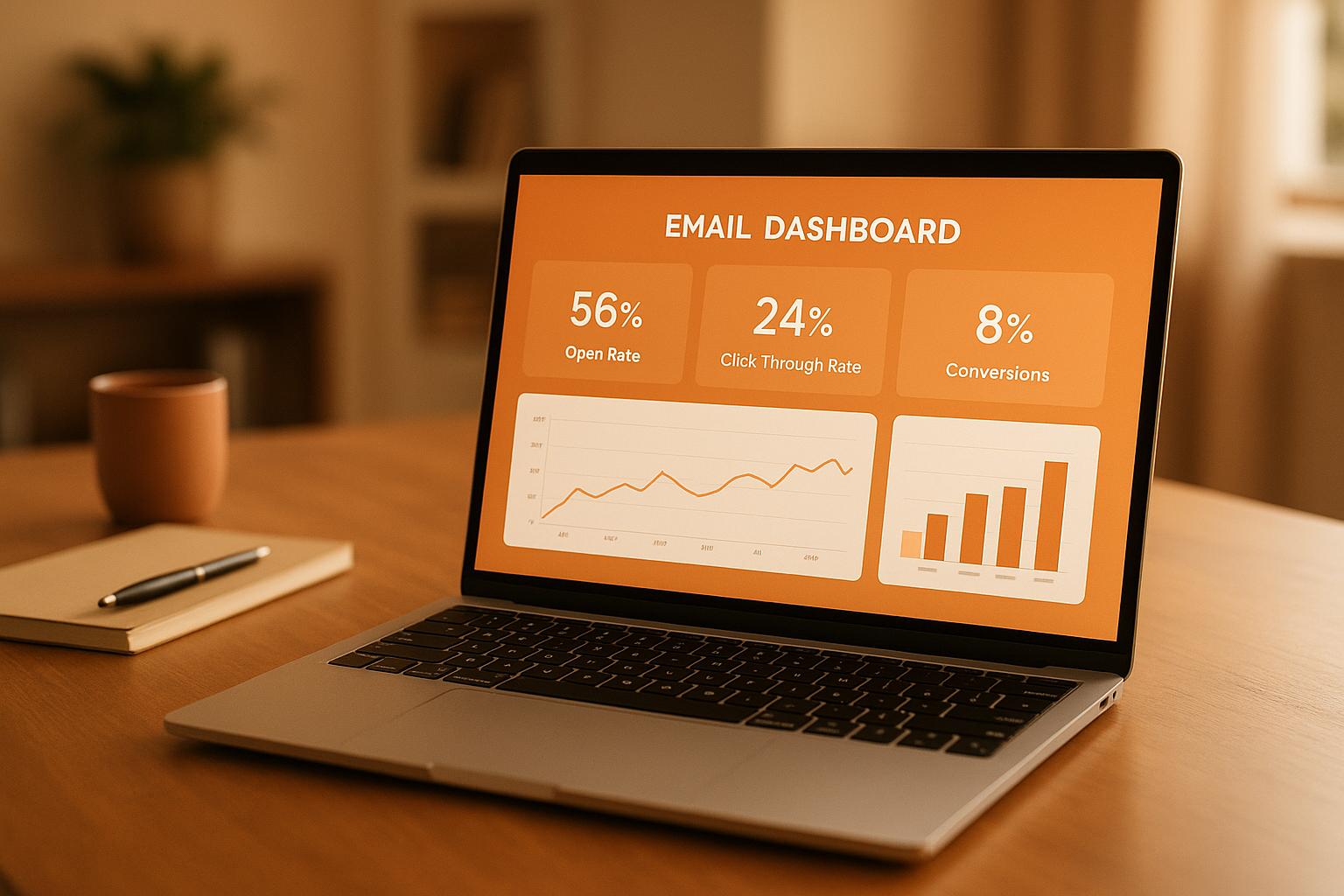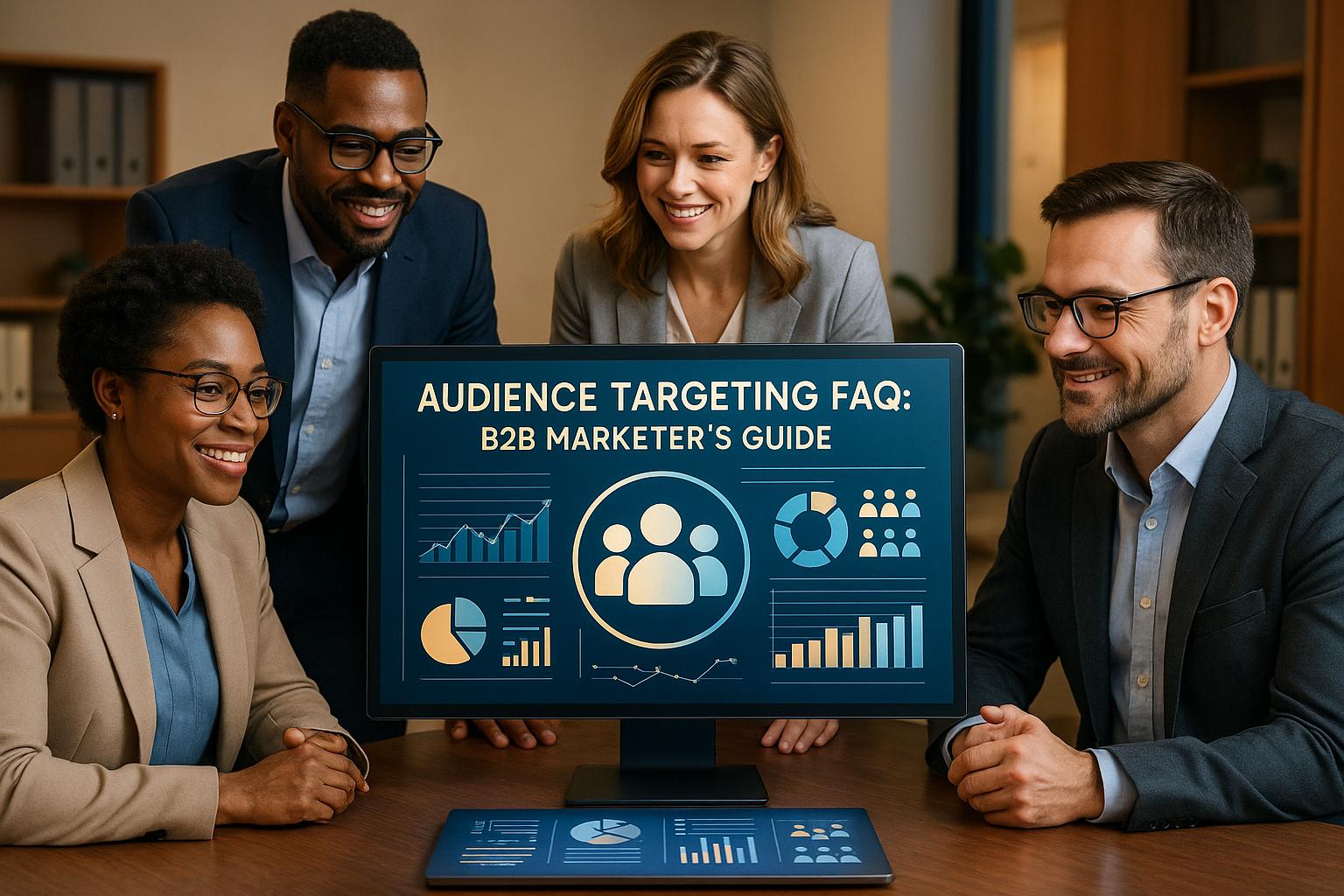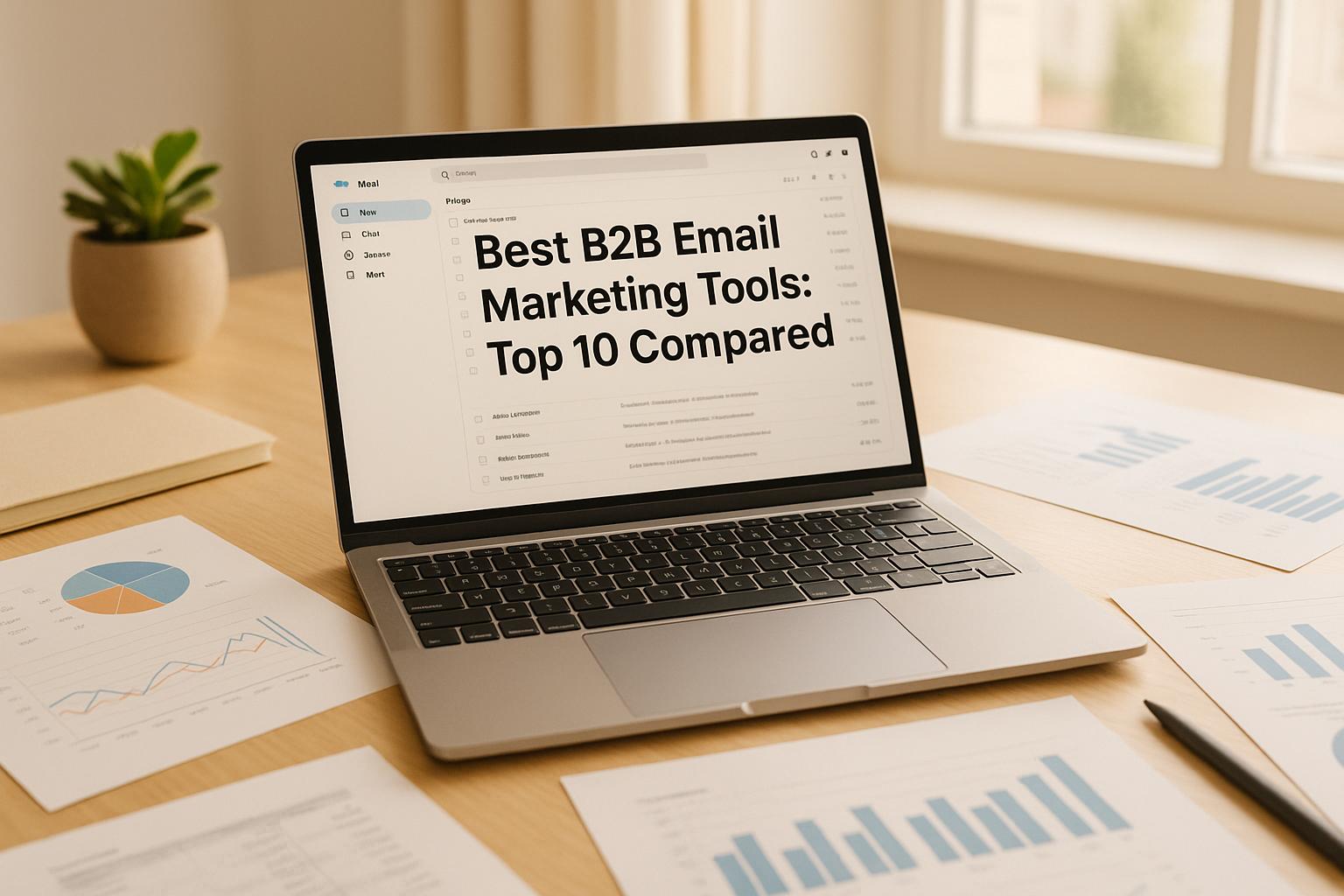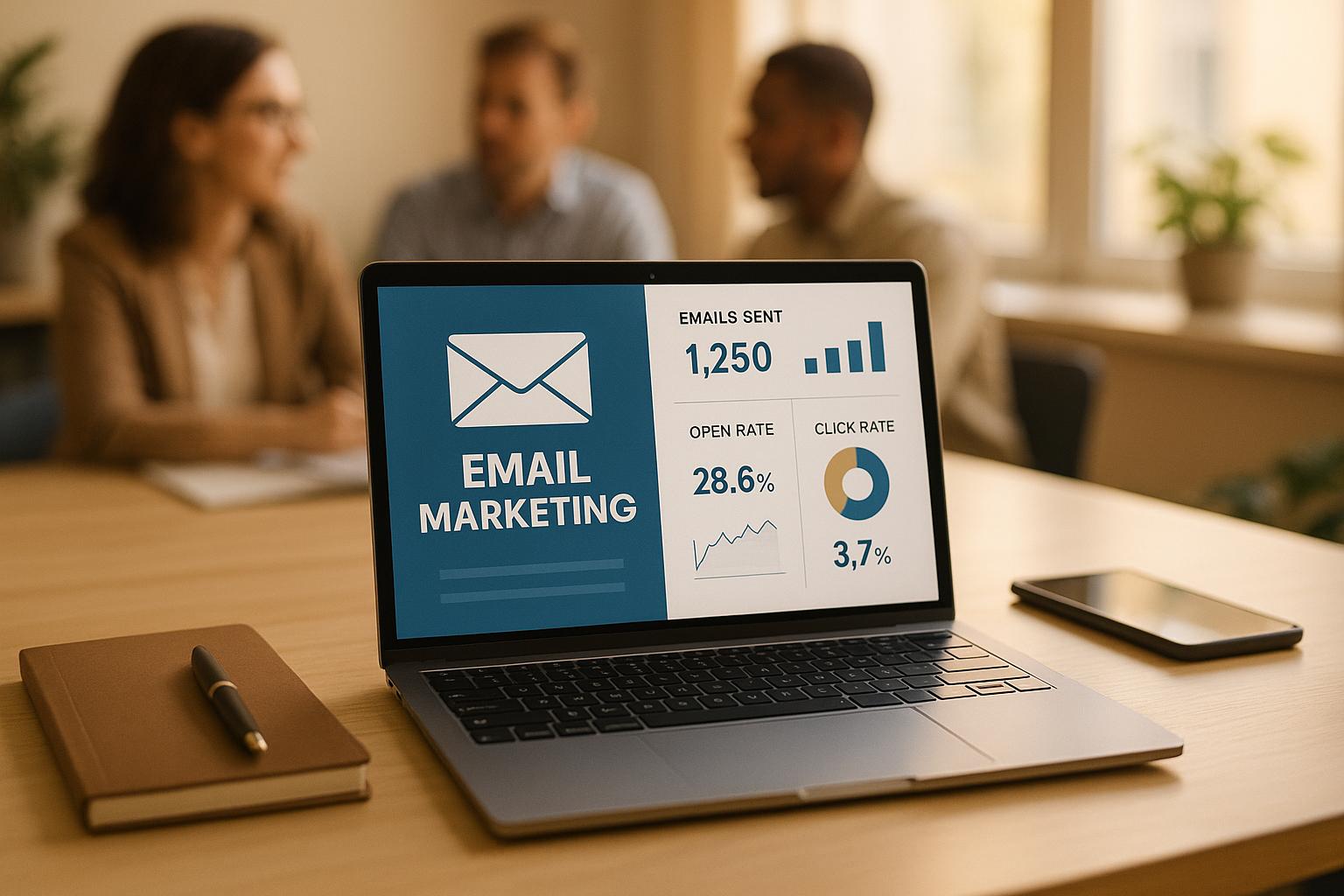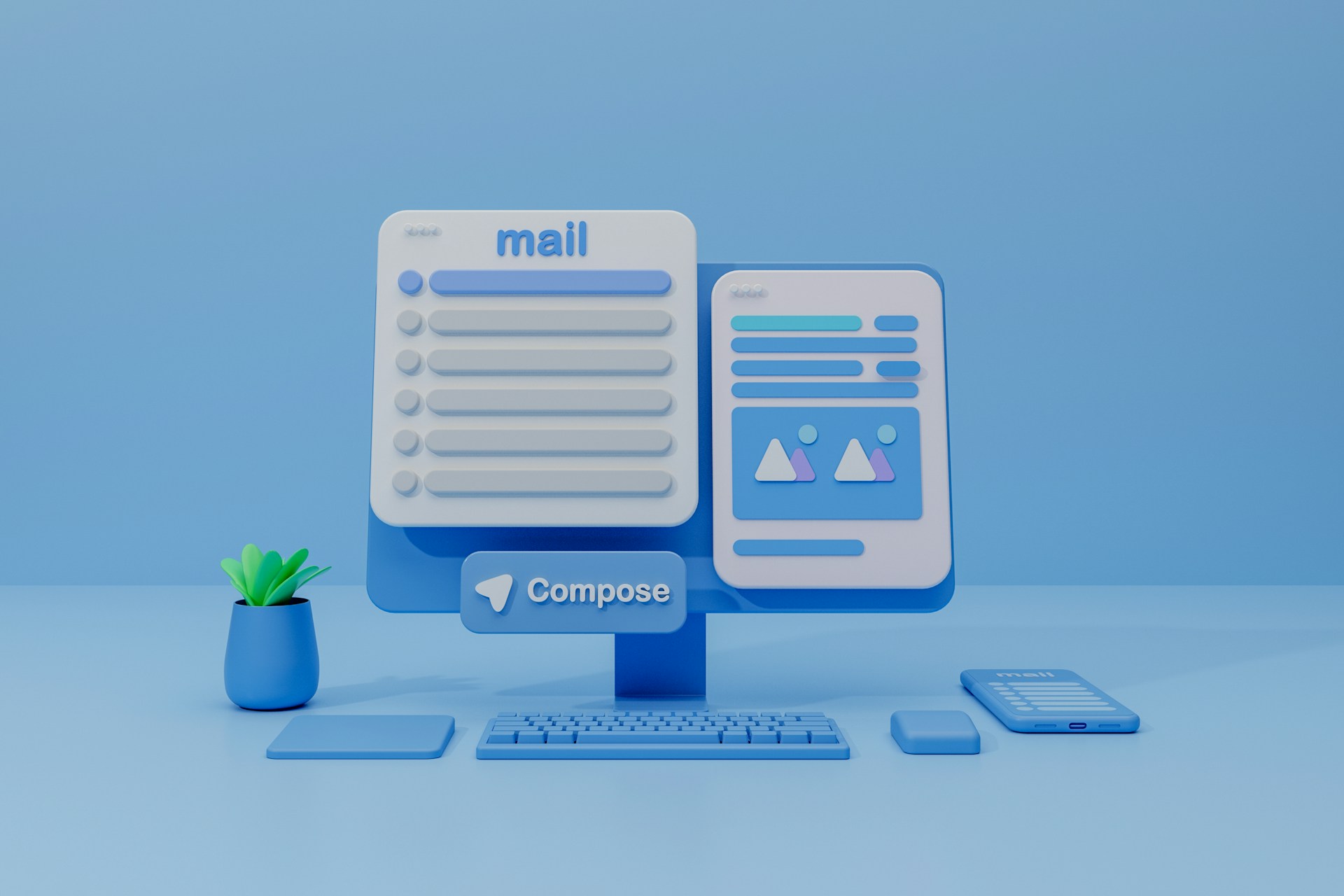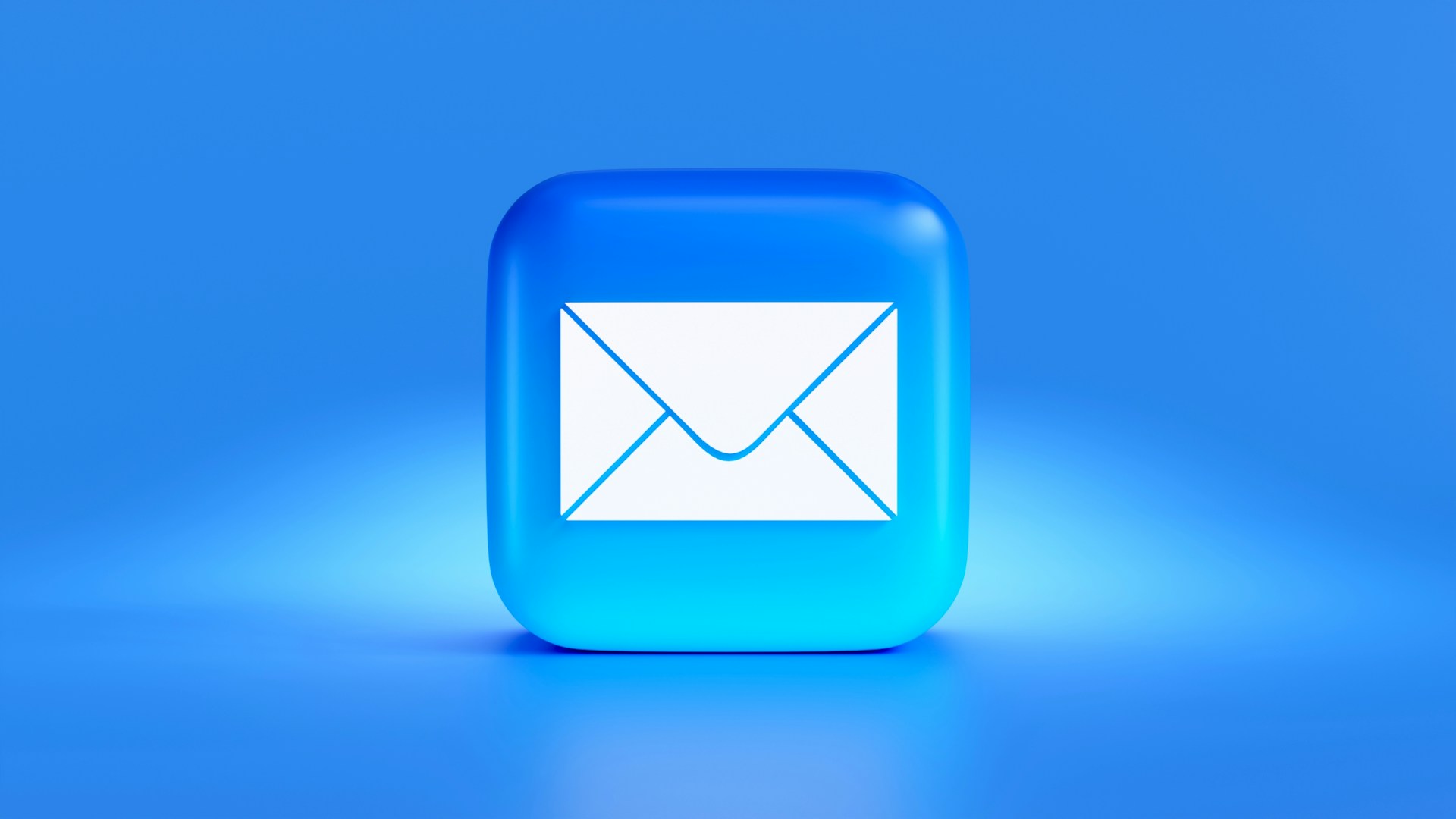Dynamic Content Personalization for Lead Nurturing

Dynamic content personalization is transforming B2B lead nurturing. It’s no longer enough to send generic emails. Instead, tailoring content to each lead’s behavior, preferences, and demographics drives better engagement and conversions. Here’s why it matters:
- 76% of consumers feel frustrated without personalized experiences.
- Personalized emails can boost transaction rates by up to 6x.
- Yet, only 39% of online retailers use personalized recommendations, leaving room for improvement.
Dynamic content adjusts email elements - like text, images, and calls-to-action - in real time. This ensures every lead receives content relevant to their needs, whether they’re downloading whitepapers, attending webinars, or exploring pricing pages. For example, healthcare professionals might see solutions for patient data, while finance leads get tools for compliance.
Key benefits include:
- Higher open and click-through rates (up to 70% open and 40% click-through with platforms like Breaker).
- Scalability for managing thousands of leads without manual effort.
- Stronger connections by addressing specific pain points.
To succeed, businesses need:
- A centralized CRM to organize lead data.
- Automated workflows to trigger personalized emails.
- Ongoing testing and real-time analytics to refine campaigns.
Dynamic personalization isn’t just a trend - it’s a necessity for staying competitive in B2B marketing.
What Dynamic Content Is and How It Works for Lead Nurturing
What is Dynamic Content?
Dynamic content refers to email content that adjusts automatically based on recipient data. Instead of sending a one-size-fits-all email, dynamic content tailors elements like text, images, offers, and calls-to-action to align with details such as demographics, behavior, or preferences. For instance, a single email might showcase case studies on patient data security for a healthcare professional, while presenting compliance insights to a financial director.
This personalization is powered by real-time data pulled from your CRM - things like job title, company size, website activity, and past email interactions. It goes far beyond just inserting a recipient's name. Dynamic content can transform entire sections of an email, swap out images to match an industry, or adapt the call-to-action depending on where the lead is in the sales funnel. This flexibility makes it a powerful tool for lead nurturing.
Main Benefits of Dynamic Content for Lead Nurturing
Personalized emails have a way of grabbing attention. By addressing specific interests, they naturally boost engagement and improve conversion rates. When leads feel like a message is crafted just for them, it fosters stronger relationships and builds trust.
From a practical standpoint, dynamic content is a time-saver. Once you've designed your templates and set up automation rules, the system takes over, handling personalization at scale. This efficiency eliminates the need to manually create multiple versions of an email.
And the results back it up: personalized emails can generate up to six times higher transaction rates compared to generic, non-personalized ones.
Dynamic Content vs Static Content
The distinction between dynamic and static content is simple. Static content delivers the same message to everyone - identical subject lines, images, offers, and calls-to-action. It’s a blanket approach. Dynamic content, on the other hand, uses recipient-specific data to create a customized experience that feels relevant and timely.
Here’s a quick comparison:
| Feature | Dynamic Content | Static Content |
|---|---|---|
| Personalization | High – adapts to recipient data | Low – identical for all |
| Engagement | Higher open, click, and conversion rates | Lower engagement |
| Scalability | Automated | Manual |
| Relevance | Tailored to each lead | Generic |
| Time/Effort | Saves time after setup | Time-consuming |
For example, a static email might describe generic project management features. In contrast, a dynamic email customizes the content: marketing managers see campaign planning tools, IT directors learn about security integrations, and small business owners receive pricing and setup details. This tailored approach explains why personalized emails can perform so much better, with up to six times higher transaction rates.
Dynamic content becomes even more impactful for B2B marketers using platforms like Breaker. With its automated lead generation and precise audience targeting, Breaker ensures your dynamic emails reach the right people - those already inclined to engage with personalized messaging.
Shifting from static to dynamic content isn’t just about better metrics. It’s about creating meaningful connections with your leads, laying the groundwork for long-term growth in your business. By leveraging dynamic personalization, B2B email campaigns can move beyond generic outreach to deliver messages that truly resonate.
Dynamic Email Content Explained - Tutorial by Mailtrap

Setting Up Your Foundation for Dynamic Personalization
Before diving into personalized email campaigns that adapt to each recipient, you need a solid infrastructure. Think of it as building the engine that powers your dynamic content. Without proper data collection, organization, and system integration, even the most well-crafted emails can fall flat. A strong data foundation ensures your messages are precise and actionable.
Creating a Centralized Marketing Database
Your centralized marketing database is the heart of your personalization efforts. It’s where all your lead information comes together in one place - collected, organized, and stored for easy access.
At the core of this system is a CRM (Customer Relationship Management) platform. A good CRM tracks lead interactions across channels and segments your audience based on detailed criteria. For example, Salesforce allows marketers to monitor everything from website visits to email engagement, ensuring your dynamic content stays relevant to each audience segment.
Your database should house several key data types:
- Contact information: Names, email addresses, and phone numbers.
- Behavioral data: Website visits, email activity, content downloads, and webinar participation.
- Demographic details: Age, location, and personal preferences.
- Firmographic data: Business-specific details like company size, industry, and job roles.
To keep this database flowing with fresh, targeted information, connect specialized tools to your CRM. Platforms like Breaker automatically identify and attract ideal customer profiles, feeding this data directly into your system. This eliminates the need for manual data entry while ensuring your database remains up to date.
"Breaker is not a CRM, rather a lead generation, activation, and nurturing tool. We provide robust integrations with popular CRMs to push leads further down your funnel."
- Breaker
With this setup, your database becomes a rich resource for creating personalized, impactful email campaigns.
Data Collection and Segmentation Best Practices
Once your database is in place, focus on collecting and segmenting high-quality data. It’s not about quantity - what matters is the accuracy and relevance of the information you gather.
Start by clearly defining your ideal customer profile (ICP). This allows automated systems to attract B2B subscribers who are more likely to engage with your content. Use tools with advanced matching algorithms, AI enrichment, and proprietary data sources to identify leads that fit your ICP.
When sourcing leads, prioritize quality. High-quality sources include organic sign-ups and paid lead generation through dedicated forms. Avoid co-registration networks, as they often deliver poorly targeted leads that can damage your email deliverability over time.
Segmentation is key to effective personalization. Go beyond basic demographics and focus on behavioral segmentation - grouping your audience based on their actions, engagement levels, and stage in the buyer’s journey. For example, you might treat leads who recently attended a webinar differently from those who downloaded a whitepaper.
Don’t forget about privacy compliance. Make sure you obtain explicit consent before collecting data, explain how the information will be used, and provide easy opt-out options. Including consent checkboxes on sign-up forms and linking to your privacy policy helps meet GDPR and CCPA requirements.
Regular data maintenance is also essential. Keep your lists clean by removing inactive subscribers and updating outdated information. This ensures your campaigns remain effective and your emails consistently reach the inbox.
Connecting Email Platforms with CRM Systems
For real-time personalization, your email platform and CRM system need to work seamlessly together. Without this integration, your dynamic content risks becoming static, unable to adapt to changes in lead behavior.
Most modern platforms offer native integrations that make setup straightforward. Choose an email platform that connects directly to your CRM, or use third-party tools like Zapier to bridge any gaps. Integration typically involves authenticating both systems, mapping data fields (e.g., email addresses, custom attributes), and setting up automated workflows for real-time data synchronization.
Proper field mapping is critical. For instance, if a lead downloads a whitepaper, their information should automatically update in both the CRM and the email platform, triggering a relevant nurture sequence. This ensures your email content adapts to real-time changes in lead behavior.
Automated workflows further enhance this process. Set up triggers so leads receive timely, relevant content based on their actions - like visiting a pricing page or attending a demo. Breaker exemplifies this approach by using CRM data to drive precision-targeted email campaigns, ensuring your messages are always aligned with the latest lead information.
To keep everything running smoothly, regularly test your integrations. Monitor data sync rates, check for errors, and verify that information flows correctly between systems. A high success rate in syncing data indicates your system is ready to support advanced personalization campaigns.
With a centralized database, high-quality data collection, and seamless integration, you’re well-equipped to create email content that resonates with each lead’s unique needs and interests.
Creating Personalized Email Content with Dynamic Elements
Emails that feel personal can make a world of difference. By using dynamic content, you can turn mass emails into tailored messages that connect with your audience's specific needs and interests.
Using Dynamic Tags for Personalization
Dynamic tags are like little magic tricks for email personalization. These placeholders automatically fill in details like the recipient's name, company, job title, or even recent activities. They help turn a generic email into something that feels directly written for the reader.
But don’t stop at just the basics. Sure, a greeting like "Hi [First Name]" is a good start, but you can take it further. For example, a subject line like "Hi [First Name], see solutions for [Company]" will often grab more attention than something generic. Including specifics like company names or recent interactions makes your emails stand out and feel relevant.
To avoid hiccups, always set fallback values for your tags. If someone's name isn’t available, you can use a more neutral term like "there" instead of leaving an awkward blank. And don’t forget to test your emails across different audience segments to ensure the tags work as intended.
You can also weave dynamic tags into your email body. For instance, try lines like "Based on your interest in [Product/Service], here's a resource for [Job Title]." It’s all about making the email feel like it’s speaking directly to the recipient.
That said, don’t overdo it. Focus on the most meaningful details that add real value to your message rather than cramming in every dynamic tag possible.
Now, let’s take it a step further with dynamic content blocks.
Building Dynamic Content Blocks
Dynamic content blocks allow you to customize entire sections of your email based on the recipient’s data. This ensures that each person sees only the information that’s most relevant to them.
For example, imagine you’re hosting events in multiple cities. Instead of sending a generic invite, you can display event details only to people in the relevant locations. Similarly, if you’re a software company, you could show healthcare solutions to medical professionals and financial tools to banking leads.
Industry-specific blocks are another great way to connect with your audience. Instead of sharing generic case studies, show testimonials or success stories from businesses similar to the recipient’s. For instance, a manufacturing lead might see a case study about another manufacturer, while someone in retail gets examples tailored to their industry.
You can also use behavioral triggers to guide your leads. If someone recently downloaded a whitepaper, follow up with a related guide. If they attended a webinar, share additional resources that build on that topic. These personalized touches help move leads seamlessly through your nurture sequence.
The key is to ensure that every content block provides something useful and relevant.
Customizing Offers and CTAs for Lead Segments
Once you’ve tailored your email layout with dynamic blocks, it’s time to refine your offers and calls-to-action (CTAs) based on where each lead is in their journey. The right CTA can make all the difference.
For early-stage leads, focus on educational CTAs like "Download our industry trends report" or "Access our buyer's guide." These softer asks build trust and provide value without being too pushy. For mid-stage leads - those who have engaged with several pieces of content - you can step it up with CTAs like "Schedule a consultation" or "See how [Company] can benefit from our solution."
When dealing with sales-ready leads, go for more direct offers. Phrases like "Schedule a personalized demo for [Company]" or "Get your custom pricing quote" address their immediate needs. It’s also helpful to tailor offers to the recipient’s role. Executives often care about ROI and strategic benefits, while technical staff might want detailed information about features.
Behavior also plays a big role. A lead who recently visited your pricing page is much more likely to respond to a demo invitation than someone who just subscribed to your newsletter. Personalization works - 90% of marketers say it boosts profitability, and it’s been shown to increase customer satisfaction by 52%.
sbb-itb-8889418
Setting Up Automated Lead Nurture Sequences with Dynamic Content
After crafting personalized emails with dynamic elements, the next step is automating your lead nurturing. Dynamic content takes these automated sequences to the next level by tailoring messages to align with each lead's behavior and preferences. Automation eliminates the guesswork, ensuring your leads receive the right message at the right time, based on their actions. Let’s dive into how specific triggers can activate these automated workflows seamlessly.
Trigger-Based Automation for Lead Engagement
Triggers are the backbone of automated sequences. They kick off a series of personalized emails whenever a lead performs a specific action, guiding them further along the sales funnel.
For instance, email opens and link clicks are clear indicators of engagement. If a lead opens your welcome email, you can automatically follow up with additional resources. Similarly, if they click on pricing details, your automation can respond with a demo invitation or a relevant case study.
Other actions like form submissions and content downloads are rich opportunities for automation. Downloading an industry report? Follow up with related webinars, case studies, or consultation offers. Even website visits can signal intent - like when a lead browses your product features page, indicating they’re actively exploring solutions.
The key is matching your response to the trigger. For example, a lead clicking on a technical whitepaper is likely seeking in-depth information, while someone clicking "request demo" is ready for a sales conversation. Triggers should reflect these intent levels and adjust the follow-up accordingly.
Take a SaaS company as an example: leads downloading security whitepapers might receive follow-ups with cybersecurity case studies, while those downloading productivity guides could get resources on workflow optimization. This tailored approach ensures every message feels relevant and purposeful.
Creating Multi-Step Nurture Campaigns
Multi-step campaigns are designed to adapt based on how leads interact with your emails. A simple three-step campaign might look like this: Step 1 sends an introductory email with resources tailored to the lead’s industry. If they click, Step 2 delivers related case studies. If they engage again, Step 3 provides personalized offers or webinar invitations. Leads who don’t engage can receive re-engagement emails or alternative content options.
Dynamic workflows adapt in real-time. For example, manufacturing leads might receive content about operational efficiency, while healthcare prospects get materials focused on compliance. These tailored paths feel natural because they align with the lead’s specific interests and behaviors.
Timing is also crucial. Initial follow-ups might be sent immediately, while subsequent emails are spaced 3-5 days apart - or even up to a week - to avoid overwhelming prospects. Different buyer personas may also require different tracks: executives might prefer strategic insights delivered weekly, while technical decision-makers may want more frequent, detailed product updates.
Testing and Improving Automated Sequences
To get the most out of your automated sequences, continuous testing and quick adjustments are essential. A/B testing is a great place to start - experiment with different subject lines, content formats, and calls-to-action to see what resonates best with your audience.
Begin by testing subject lines for trigger emails. Then, explore which content types - like case studies versus product demos - drive more engagement. You can also test whether your audience prefers concise messages or more detailed explanations.
Real-time analytics are invaluable for spotting and fixing issues. For example, if a specific email results in a spike in unsubscribes, pause it immediately and reassess its timing or content.
"Track Results in Real Time. Get instant visibility into open rates, click-throughs, subscriber growth, and more. No digging, no delays - just clean, actionable insights so you can optimize every send." – Breaker
Key metrics like open rates, click-through rates, conversion rates, and time to conversion provide vital insights. According to Breaker, the average open rate for active campaigns is 30%, with a 4% average click-through rate. Use these benchmarks to evaluate your performance and pinpoint areas for improvement.
It’s also important to track performance across different audience segments. Automation might work well for small businesses but may need adjustments for enterprise-level prospects. Regularly reviewing your automation paths ensures they evolve alongside your business and audience insights, helping you maintain strong engagement through tailored, dynamic content.
Tracking the Performance of Dynamic Content Campaigns
Once you've set up your dynamic personalization strategies, the next step is to ensure they're hitting the mark. Tracking performance is key - it helps you understand what's working and where adjustments are needed. By monitoring specific metrics, you can continuously refine your campaigns and keep them aligned with your goals.
Important Metrics for Dynamic Campaigns
Certain metrics are especially useful for evaluating dynamic content campaigns. For instance, open rates can show which personalization techniques grab attention across different audience segments. Click-through rates (CTR) help measure how well your content drives engagement, while conversion rates reveal which tailored elements are effectively guiding leads through your sales funnel.
Other valuable indicators include engagement time, unsubscribe rates, and bounce rates. Together, these metrics paint a picture of how well your personalized content resonates with various audience groups.
A/B Testing Dynamic Content Elements
Metrics alone aren't enough - you also need to test and tweak your dynamic content to maximize its impact. A good starting point is experimenting with personalized subject lines. For example, compare using a recipient's name with referencing their recent activity to see which approach performs better. Similarly, test dynamic content blocks tailored to different segments.
Here’s an example: A B2B SaaS company found that manufacturing leads responded strongly to ROI-focused case studies, while healthcare leads preferred content centered on compliance. By adjusting their content blocks based on these insights, the company saw a 25% boost in conversion rates over three months.
You can also test customized offers and calls-to-action (CTAs). For instance, executives might respond more to "Schedule a Strategic Consultation", whereas technical decision-makers may prefer "View Technical Demo." Just remember to change one variable at a time to maintain the integrity of your personalization efforts.
Using Real-Time Analytics for Ongoing Improvement
Real-time analytics offer immediate insights into how your campaign is performing, helping you spot trends and fix issues as they arise.
For example, if a specific dynamic content block causes a spike in unsubscribe rates, you can pause it and investigate before it impacts your entire campaign. On the flip side, if you notice a sudden increase in engagement from a particular segment, dig deeper to understand what’s driving that success and apply those lessons to other areas.
These analytics also help refine your segmentation strategies. You might find that small businesses are more drawn to cost-saving messages, while enterprise prospects respond better to content focused on efficiency. By leveraging these insights, you can fine-tune your campaigns to better meet the needs of each group.
Conclusion: Getting the Most from Dynamic Content for Lead Nurturing
Personalizing dynamic content has reshaped the way B2B marketers approach lead nurturing. The numbers back this up: 90% of marketers attribute higher profitability to personalization, and 52% of consumers report greater satisfaction with tailored experiences. These figures highlight a clear opportunity to elevate your lead nurturing strategy.
To make the most of this approach, it’s essential to start with a strong foundation. Once that’s in place, tools like dynamic content blocks, personalized calls-to-action (CTAs), and trigger-based automation can seamlessly work together to deliver the right message to the right lead at just the right time.
That said, dynamic content isn’t something you can set up once and forget about. Success depends on ongoing optimization. Regular A/B testing and analyzing real-time data will keep your campaigns relevant as market trends shift and lead behaviors change. The companies that thrive in this space are the ones that consistently refine their strategies.
For B2B marketers ready to step into this space, platforms like Breaker offer powerful tools, including automated lead generation, precise targeting, and real-time analytics. These features make it easier to implement and scale personalized campaigns, as highlighted throughout this guide.
The shift from generic, one-size-fits-all emails to tailored, dynamic experiences isn’t just a trend - it’s quickly becoming the standard. Companies that embrace and excel in dynamic content personalization today will position themselves ahead of the competition, nurturing leads more effectively and driving higher conversions.
FAQs
How does dynamic content personalization enhance lead nurturing in B2B email marketing?
Dynamic content personalization lets you craft email campaigns that resonate with your leads by addressing their unique needs, preferences, and behaviors. When your content feels relevant and tailored, it strengthens connections, keeps your audience interested, and moves them through the sales funnel more smoothly.
Tools like Breaker make this process easier for B2B marketers. By automating lead generation and using precise audience targeting, Breaker ensures your message lands with the right person at the perfect moment. This strategy not only boosts engagement but also turns leads into loyal customers.
What tools are essential for implementing dynamic content personalization in B2B email marketing?
To make dynamic content personalization work seamlessly, the right tools can make all the difference. Take a platform like Breaker, for example. It streamlines the process with features like an intuitive newsletter builder, automated lead generation, and precise audience targeting. These tools enable you to craft content that speaks directly to specific audience segments, ensuring your emails hit the mark with the right people at the right moment.
On top of that, Breaker offers real-time performance analytics, allowing you to track and refine your campaigns as they run. This ensures your emails not only reach inboxes but also engage subscribers effectively. With these capabilities, you can deliver tailored experiences that build stronger connections and drive impactful results.
How can businesses ensure their dynamic content campaigns comply with privacy laws like GDPR and CCPA?
To comply with privacy regulations like GDPR and CCPA, businesses need to focus on being transparent and protecting user data. Begin by clearly explaining to users how their data will be collected, stored, and used. Make sure to get explicit consent before leveraging personal information for personalized content.
Equally important is putting strong data protection measures in place. This includes using encryption and secure storage to keep user information safe. Regularly revisiting and updating your practices is key to staying in step with changing regulations. Seeking advice from legal experts or privacy professionals can further ensure your campaigns meet all required standards.


